4 A&E/Blowout
Gameday
AUDIO / e Weekly
City establishes ‘ICE free zones’
Resolution passes amid growing safety concerns
By FEMI HORRALL daily senior staffer
Over one month since ocials first warned of federal immigration agents’ arrival in Evanston, community members are expressing worry about safety in the city.
Evanston Mayor Daniel Biss con rmed ICE was present in Evanston Sunday morning in an X post the same day. Multiple community members were taken, according to the post.
“People in our community are not going to work because going outside is not safe,” 2nd Ward resident Kate Jaggard Tyo said during public comment at Monday’s City Council meeting. “Parents are keeping their children home from school because they are terri ed of what could happen. People are afraid to go to the grocery store.”
In response to growing concerns, City Council voted 7-0 to adopt a resolution prohibiting the use of city property, like parking lots and garages, in federal civil immigration enforcement operations. e resolution resembles the “ICE Free
Zone” executive order Chicago Mayor Brandon Johnson signed last week.
e resolution directs sta to use physical barriers to limit access to City-owned properties as necessary. It also directs sta to print and disseminate signage for renters and private property owners to use to delineate nonpublic areas of property where civil immigration enforcement activities are restricted.
“I think all of us have a moral duty, in this case, not to allow life to go on as usual,” Biss said Monday. “Whoever you are, your community is under a ack right now.”
In September, the council also passed a resolution calling on state and national legislators to prohibit federal law enforcement o cers from wearing face coverings.
City Clerk Stephanie Mendoza urged locals to support each other however they can. She suggested that employers, when possible, continue paying employees who are afraid to show up to work.
“Just help people out in the best ways that you can, so they can be protected and they can stay home and they can feel safe,” Mendoza said. “Even if you don’t have time to be a
» See ICE , page 15
PAGES 7-10
A Boogie Wit da Hoodie enlivens WelshRyan Arena at annual Blowout concert NU to host Purdue in nal lakeside game
Hear about some of the past week’s top stories
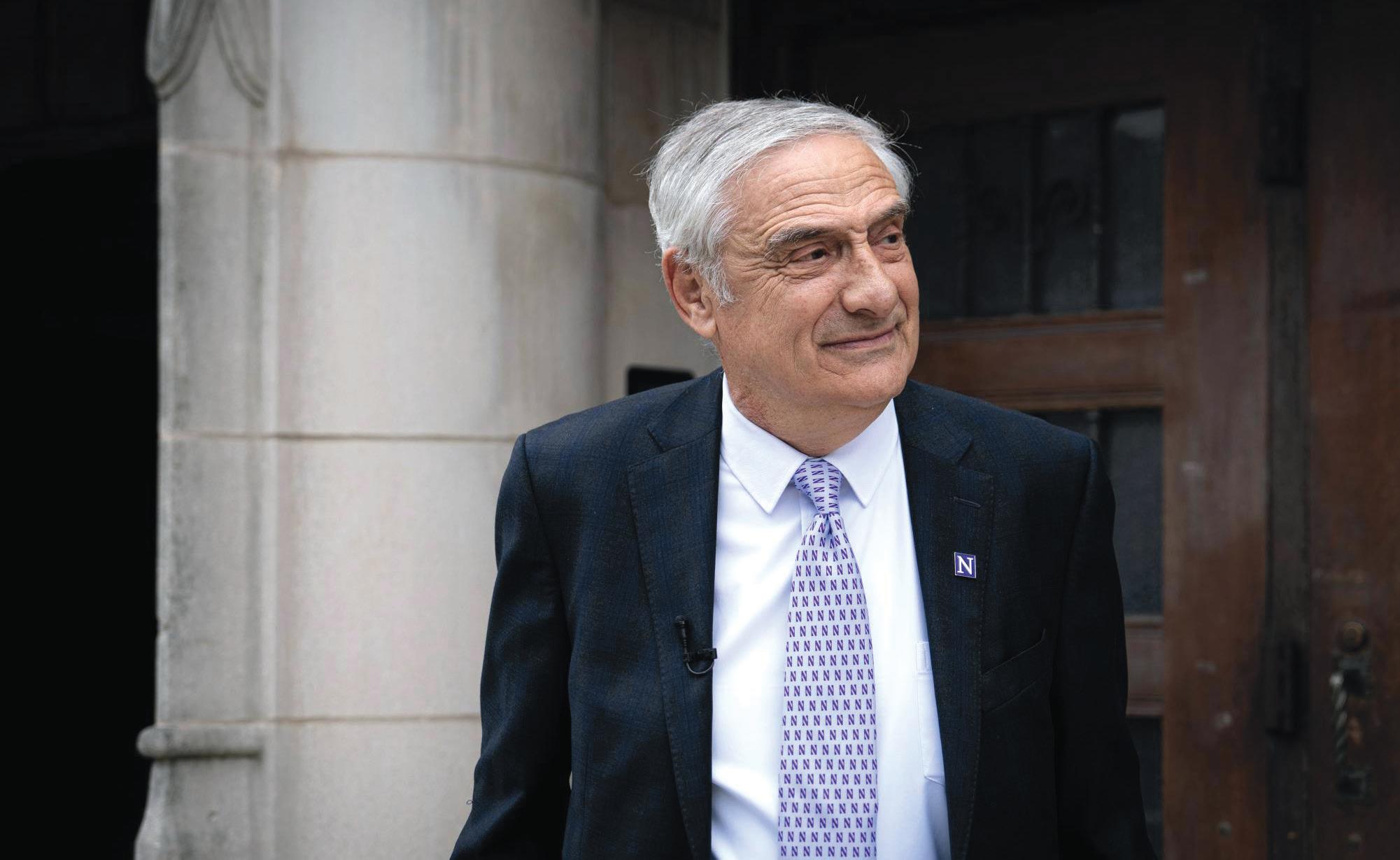
NU Prof. Joel Mokyr wins Nobel Econ
and history professor wins half of 2025 prize in economic sciences
By NINETH KANIESKI KOSO and CARLOTTA ANGIOLILLO daily senior staffers @ninethkk / @carlo aang76
Early Monday morning, economics and history Prof. Joel Mokyr noticed a missed phone
call from a +46 dialing code. at missed call originated from a Swedish number and was meant to inform him that he had won half of the 2025 Sveriges Riksbank Prize in Economic Sciences in Memory of Alfred Nobel.
Mokyr won the Nobel Prize for Economic Sciences for his work
D65 Board teeters on closure plan
Under new leadership, board members search for wiggle room
By SIDDARTH SIVARAMAN daily senior staffer @sidvaraman
e Evanston/Skokie School District 65 Board of Education signalled openness to extending its discussion timeline or staggering a three-school closure plan at a special board meeting Tuesday morning.
e potential school shu erings are part of Phase 3 of the district’s Structural De cit Reduction Plan, in which District 65 aims to eliminate $10 to $15 million in spending, set to go into e ect for the 2026-27 school year. Scenarios were rst announced at a Sept. 29 board meeting.
Newly-elected Board President Patricia S. Anderson said the board may need to extend Phase 3 of the SDRP for district sta to model alternative scenarios based on board members’ new ideas or community members’ pitches at the district’s scenario feedback sessions. District sta are collecting input from sessions at each of the district’s middle schools and the Fleetwood-Jourdain Community Center this week.
The board must request

additional models from district administrators before its Nov. 3 meeting to be prepared for its current Nov. 17 scenario decision deadline, said Stacy Beardsley, assistant superintendent of performance management and accountability.
“If the deadline begins to slide, the feasibility to do it well becomes questionable,” she said.
The push for closing three schools one a er another, instead of all at once, was led by board member Omar Salem, who wasn’t present at the Sept. 29 meeting.
Spreading out closures and ensuring that students wouldn’t be impacted multiple times would buy time for the administration to project nancial e ects more precisely, he said. It would also help the board proceed through multiple closures with more care, he added.
“I don’t see how that doesn’t work for us,” Salem said. Salem said he had asked the board to schedule a special meeting before community feedback sessions on the administration’s proposed scenarios began Tuesday evening. Anderson takes on board presidency as Sergio Hernandez steps

Nov. 3 meeting to be prepared for its current Nov. 17
decision deadline.
down from leadership role
As board members and onlookers se led into their seats following a recess three hours into the meeting, a shrill whistle broke through the cha er.
“Don’t make me use my ‘teacher’ voice,” Anderson told the crowd.
Although she remained in the same chair she occupied as a member, the moment o ered a glimpse of what a board might look like under Anderson’s gavel.
In her opening statement as board president, she said she would welcome di erent perspectives from the district’s bargaining
units, parents and other community members. She also emphasized the need for creative solutions to ensure participation from marginalized groups.
“I’m the board president because I’m the most pragmatic person here,” Anderson said. “ is is a team of eight, and there are eight di erent opinions.”
A er three years in the role, Hernandez announced he would step down from the presidency in the wake of former Superintendent Devon Horton’s federal indictment ursday.
» See D65, page 15
demonstrating how technological processes have led to sustained economic growth, identifying three prerequisites for growth: useful knowledge, mechanical competence and institutions conducive to technological growth.
e other half of the award is shared between Philippe Aghion of Collège de France and the London School of Economics and Peter Howi (Weinberg Doctorate ’73) of Brown University for their work creating a mathematical model for the theory of sustained growth through creative
» See PRIZE , page 15
NU courses cover Israel-Hamas war
Faculty urge civil discourse amid rising scrutiny
By CATE BOUVET daily senior staffer @catebouvet
From Jewish Studies 280-4: Violence in Israel/Palestine: A History to Humanities 370-4-23: What is Antisemitism?, Northwestern o ers several classes that touch on topics related to the Israel-Hamas war.
NU faculty are teaching courses on the politically charged con ict amid the Trump administration’s freeze of $790 million of the University’s federal funding over alleged antisemitism. The University has recently made several e orts to ght antisemitism and Islamophobia.
History Prof. David Shyovitz taught What is Antisemitism? for the rst time in Winter Quarter of 2024, shortly a er the Oct. 7 surprise a ack on Israel by the militant group Hamas.
“ ere were many students in the class who, for di erent kinds
of reasons, also felt that the stakes of this felt very personally high to them, and that could have taken us o the rails,” Shyovitz said. “But fortunately, it really added to the educational experience, that was my perspective at least. e more invested someone feels in the topic, the be er.”
He said the course met a need particular to that moment, exploring concepts of hatred, violence and discrimination toward Jewish people throughout various historical periods. e course will be o ered again in Winter Quarter 2026. In Jewish Studies 280-4: Violence in Israel/Palestine: A History, Jewish and Israel Studies Prof. Shira Pinhas, focuses on the history of violence in the region in the 20th century with a technological focus. Beginning with the O oman Empire, the class goes through the British mandate to establish the state of Israel and some of the major con icts and military technologies used in the late 20th century. Pinhas said she tries to avoid pretending that the topic is neutral,
» See CLASSES , page 15
Council hesitant of proposed property tax hikes
By RUBY DOWLING the daily northwestern
In a lengthy discussion of Evanston’s proposed 2026 budget and proposed 2026 Capital Improvement Plan on Monday, councilmembers expressed hesitance toward raising property taxes for the rst time in ve years.
is was the rst time City Council discussed the proposed budget, which city sta released on Oct. 6. Council aims to pass the 2026 budget at its Nov. 24 meeting before the Cook County December deadline. e proposed budget suggests a $6.5 million increased property tax levy to support the General Fund, expenditures that don’t fall into a speci c category, as well as pensions for the new Parks and Recreation fund.
Taxes have been kept at for the ve years leading up to scal year 2026, according to the city’s Chief Financial O cer Hitesh Desai. However, in ation has squeezed the budget.
Councilmembers remained consistent in their reluctance to increase property taxes. Council previously voted Sept. 29 to implement a municipal grocery tax as a favorable — but unpopular — alternative to raising property taxes in light of the state grocery tax expiring in 2026.
“My perspective here is that we’ve held o on increasing our general fund property tax for ve or six years, and now — boom — all of a sudden, you have to make a pre y big step, (about) 13%,” Ald. Jonathan Nieuwsma (4th) said. “ at’s going to hurt.” Without the tax levy increase, the General Fund will be completely depleted by scal year 2028, according to the city’s Deputy CFO Clayton Black. But even if it is implemented, more action will still be needed to combat a budget de cit in scal year 2027.
City Engineer Lara Biggs delivered the Capital Improvement Plan presentation, providing an overview of ongoing and proposed projects to improve infrastructure around the city. Biggs highlighted that several tra c lights and parks are approaching the “end of their useful life.”
“Just in a number of playground pieces of equipment that we had to remove in 2025 for safety reasons, we would need $4 million just to replace (them),”
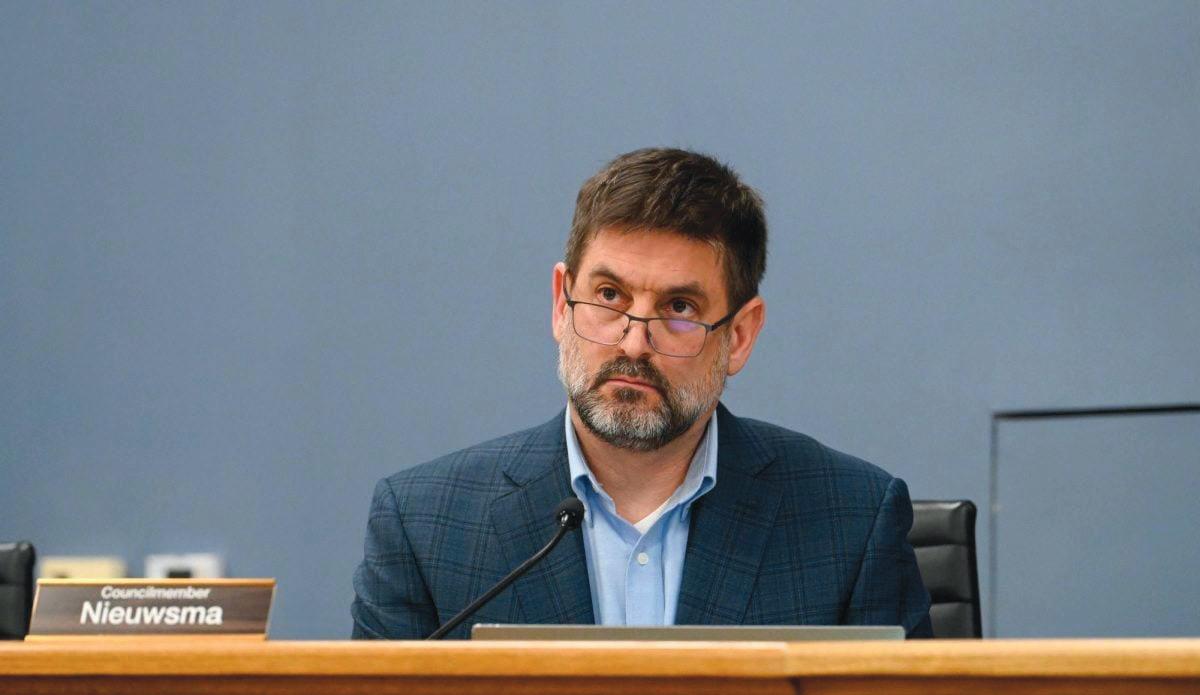
she said. In response, Ald. Shawn Iles (3rd) voiced strong concerns about whether the necessity of some proposed projects warrant such high costs. e proposed budget for repairs on the water xture in Evanston’s Fountain Square lands around $2.4 million — a price tag Iles said is too high given Evanston’s cold climate would make it “di cult to maintain.”
Ald. Clare Kelly (1st) pushed back on Iles’s concerns, citing a responsibility to taxpayers to keep the fountain working a er spending over $6 million to construct it in 2019.
Iles also suggested that instead of repairing all of the

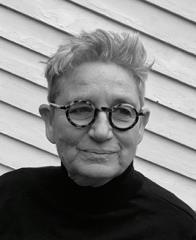
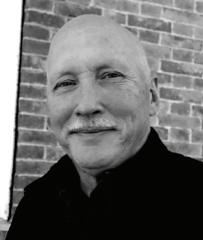

playgrounds, some could be converted into parkland. He added census data could be used to assess the community’s needs.
“ ere’s a few things that you’ve talked about that I’d like to put back up on the shelf,” Iles said to Biggs during the discussion.
e CIP presentation also addressed concerns with funding the Sidewalk Improvement Program.
e current program replaced a 50/50 cost sharing program in 2022, placing the onus on the city to fund sidewalk repairs. According to Biggs, demand for repairs is high, and costs have increased to the point where the 15-year timeline for the Sidewalk
Improvement Program’s phased approach is projected to double.
Ald. Juan Geracaris (9th) and Nieuwsma voiced support for the current sidewalk program, arguing that the city should bear the responsibility to pay for sidewalk repairs.
“I walk down somebody else’s sidewalk probably more than I walk down the sidewalk in front of my own house,” Nieuwsma said. “If all I’m doing is paying for what’s in my own house, it’s not really paying for what I’m actually using.”
rubydowling2028@u.northwestern.edu



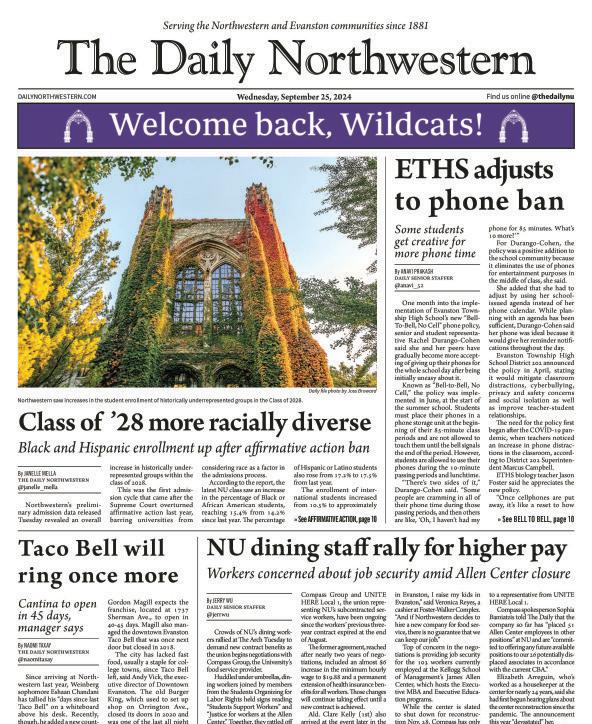
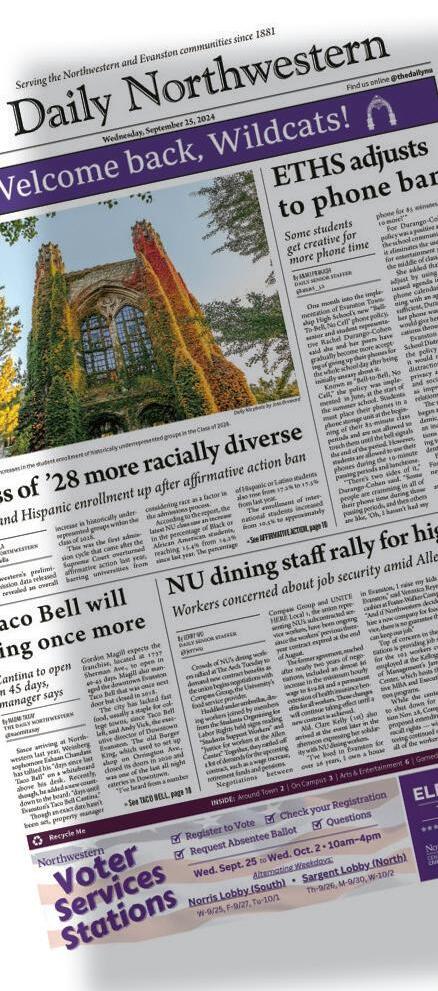











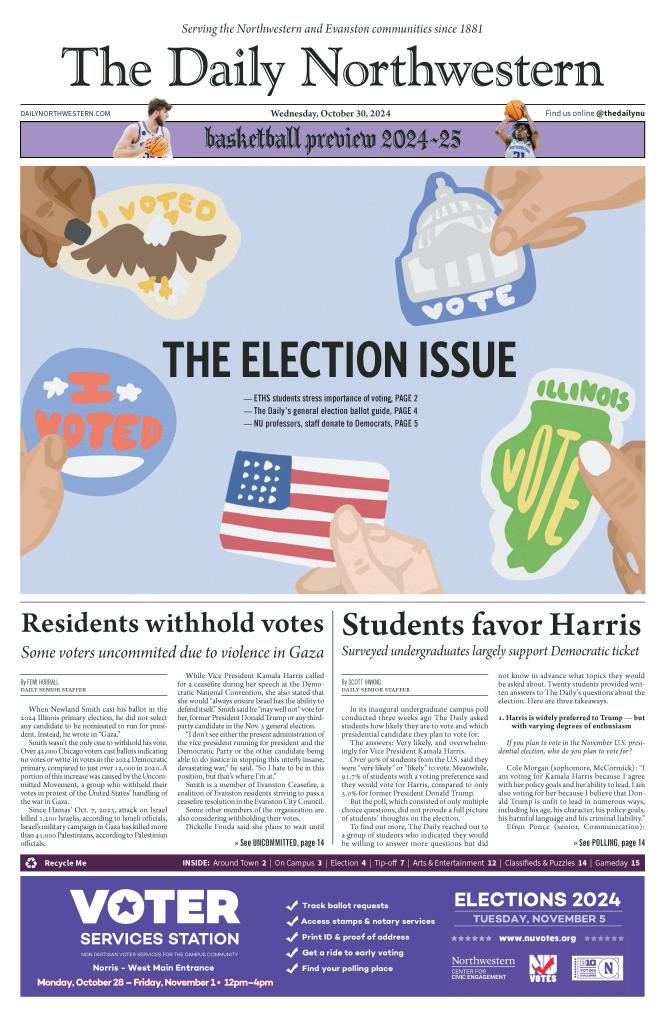

Hillel community celebrates hostage release
By LUCAS KUBOVCHIK the daily northwestern
@lucaskubovchik
Members of the Northwestern Hillel community gathered on Foster-Walker Complex Lawn Monday a ernoon to celebrate the return of Israeli hostages from Hamas.
e return comes a er Israel and Hamas agreed to the “ rst phase” of President Donald Trump’s proposal to pause the ghting of the Israel-Hamas war last week.
Hamas released the remaining 20 living Israeli hostages in return for Palestinian prisoners. Meanwhile, the Israeli military plans on withdrawing from the majority of Gaza, marking new steps toward a cease re a er two years of war, which erupted a er the events of Oct. 7, 2023.
e gathering featured song and prayer, complete with clapping and linked arms in observance of the recent release.
“Today is a very special day for the Jewish community, for the State of Israel and for the world,” said Claire Conner, a Medill junior and the NU Hillel student president. “It marks the cease re agreement that has freed the remaining living hostages from Israel.”
Despite what Conner described as “powerful” and “meaningful” prayers and gatherings over the past two years, she said it felt as though something was missing without peace. Now, with an end to the con ict in sight, she said this moment is one of much signi cance to the Jewish community.
Bienen senior and student vice president of NU Hillel Jeremy Berkun shared Conner’s sentiments and re ected on the importance of remaining united as a community.
“I think there’s a beauty in being able to connect with a shared direction and a shared goal,” Berkun said. “In our eyes, our shared goal is peace and prosperity for everyone in the Middle East, and today is the beginning of maybe a direction towards that.”
For Berkun, the Jewish community’s next steps include hope, prayer and resilience at NU and beyond.

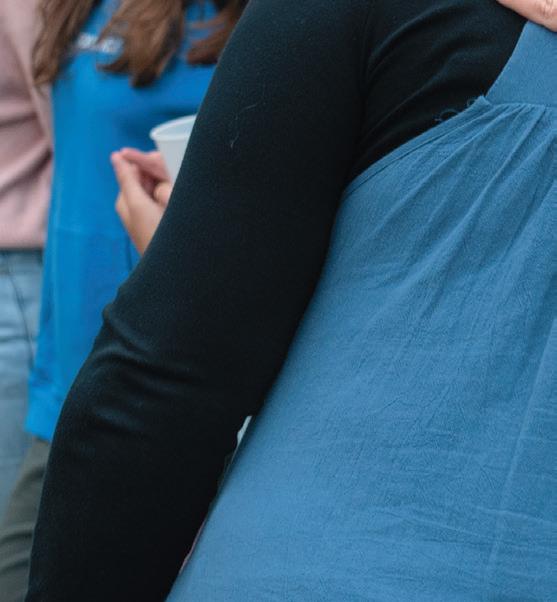
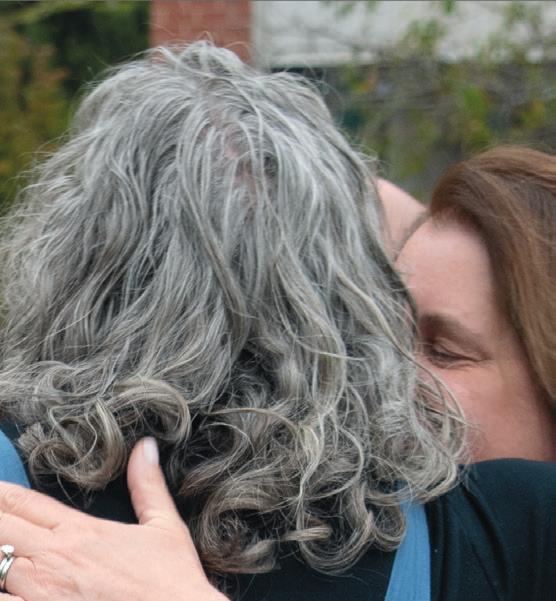
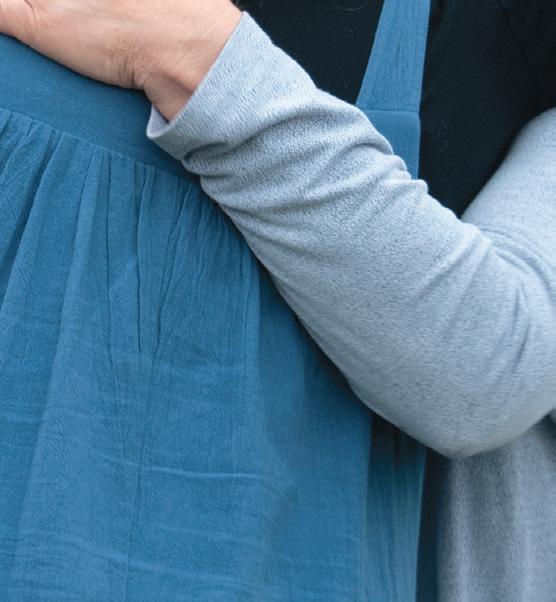

Chabad Rabbi Dov Hillel Klein, who helped lead the gathering, described the event as “powerful” and “miraculous.”
“ e Jewish people throughout the world need peace,” Klein said. “Being able to step back and say, ‘We can care about each other, we can be friends with each other,’ is the biggest message right now, and that is the true miracle.” e ability to appreciate one another as human beings, regardless of a liation or location, remains essential, said Klein.

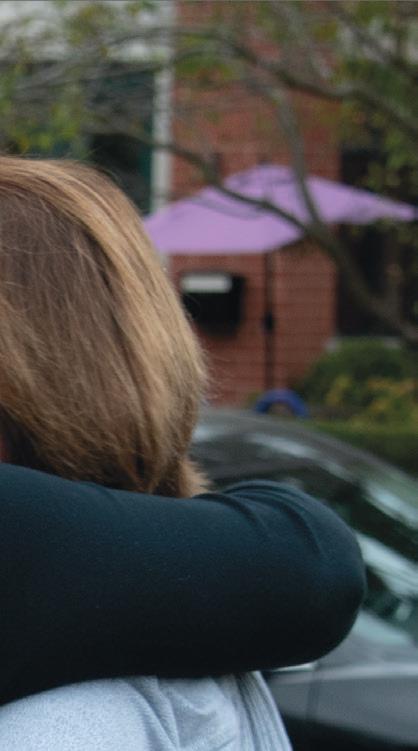
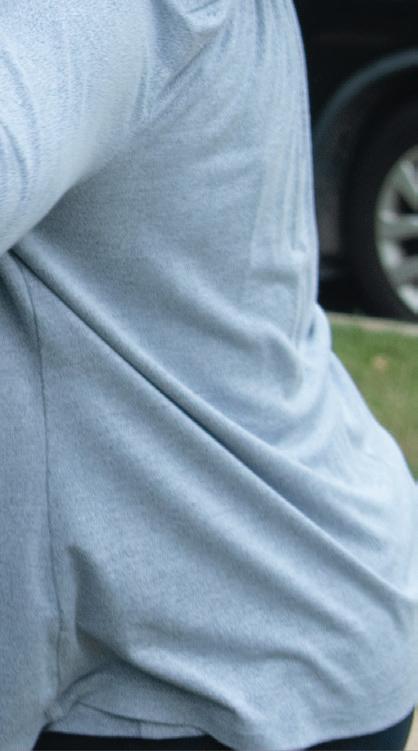
As the event came to a close and some a endees le the eld, others stuck around to continue the celebration with friends and conversation.
“We as a people are incomplete as long as there are Jews in captivity,” Conner said. “So today, today is an amazing day.”
lucaskubovchik2029@u.northwestern.edu
Ad Office | 847.491.7206 spc-compshop@northwestern.edu
THE DAILY NORTHWESTERN is printed each Wednesday during the academic year, except vacation periods, the two weeks preceding them and once during August, by Students Publishing Co., Inc. of Northwestern University, 1999 Campus Drive, Evanston, IL 60208. All news is published 24/7 online at Dailynorthwestern.com.
First copy of THE DAILY is free, additional copies are 50 cents. All material published herein, except advertising or where indicated otherwise, is Copyright 2025 THE DAILY NORTHWESTERN and protected under the “work made for hire” and “periodical publication” clauses of copyright law.
POSTMASTER: Send address changes to THE DAILY NORTHWESTERN, 1999 Campus Drive, Evanston, IL 60208. Subscriptions are $100 for the academic year. THE DAILY NORTHWESTERN is not responsible for more than one incorrect ad insertion.
Check out
DAILYNORTHWESTERN.COM for breaking news








A&E arts and entertainment

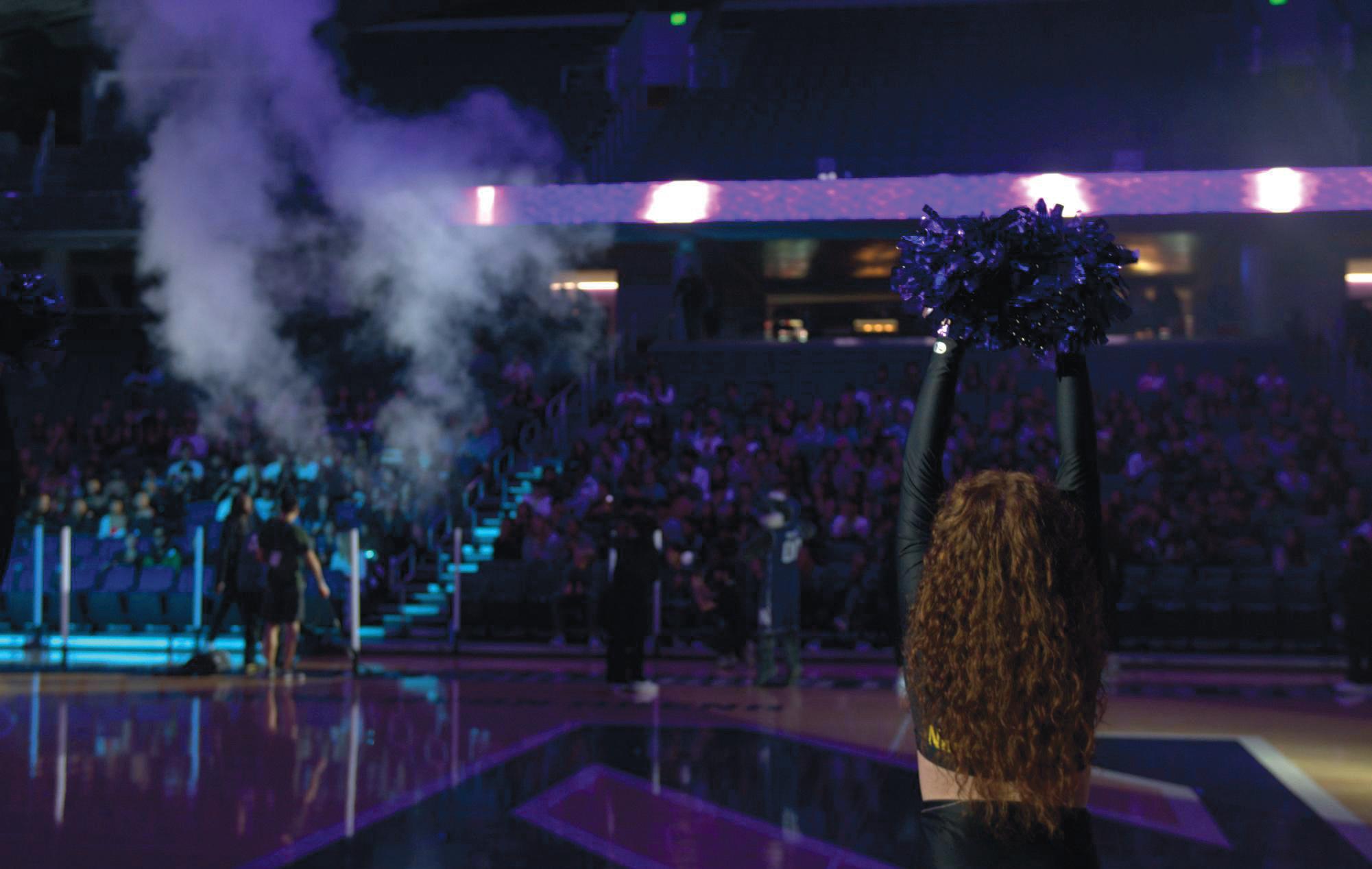

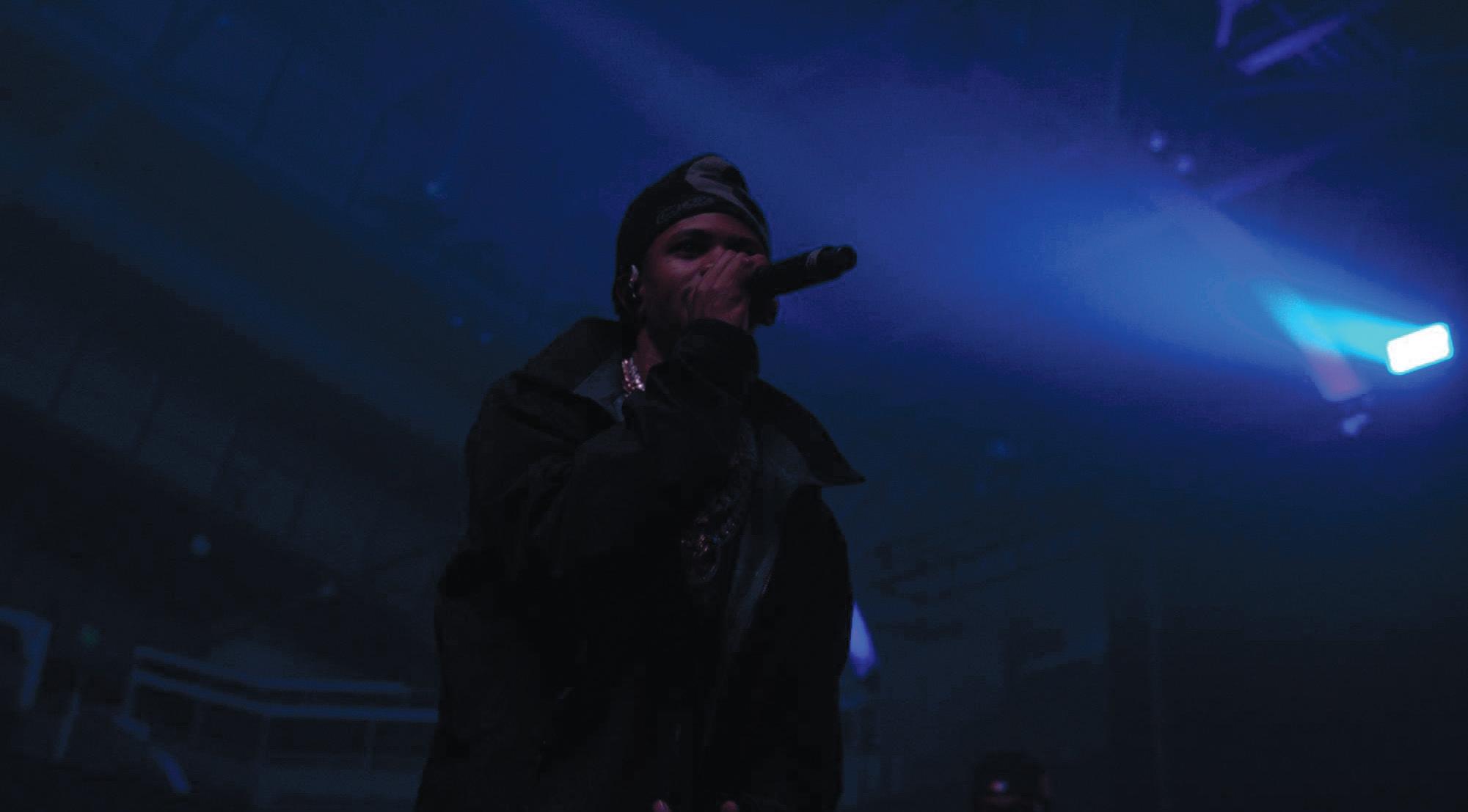

A Boogie brings stellar energy to 2025 Blowout
By OLIVIA MA
the daily northwestern
Northwestern students packed Welsh-Ryan Arena on Thursday night and crowded the floor during Blowout, an annual fall concert hosted by student-run entertainment board A&O Productions.
This year’s headliner, A Boogie Wit da Hoodie, transformed the sports venue into a high-energy concert as students moshed and screamed the lyrics to hits like “Drowning” and “Look Back at It.”
As doors opened at 7 p.m., organizers handed out free burritos. Northwestern Athletics then organized a basketball preseason event, which included introductions to the men’s and women’s teams along with speeches from both coaches. Anticipation grew as students were let onto the floor and RHOME & Friends, a set
led by rapper and NU alum RHOME (Weinberg ’23), took the stage before A Boogie’s performance.
For many students, the event was more than a free concert — It was a moment of unity and spirit.
“I think it definitely helps build community,” Medill sophomore Darasimi Bankole said. “Because almost the whole school is here, I think it’s a really good chance to see people that maybe you didn’t actually come with. Everyone’s just good energy and everyone’s very positive.”
For others, Blowout’s accessibility brought people together as much as its scale.
Weinberg freshman Nanees Abakar said even though A Boogie is not a super popular artist, his work is still well-known among students, making him a fitting choice for Blowout.
“I think one of the biggest barriers to people finding community is income,” Abakar said. “So
I think it’s great that they’re improving accessibility to things like concerts. Like there are some people who have never seen a celebrity in a concert because they just never had the means to.”
One of A&O’s goals is promoting that sense of community, said Weinberg senior Max Garon, co-chair of the organization.
Garon said A&O’s concert committee selects each Blowout artist, pursuing one or two big names based on what it believes NU students will enjoy. The process is then passed down to the production committee, which handles equipment, travel and other technicalities.
Garon said throughout Blowout’s development process, his biggest surprise came from the opener, RHOME & Friends, who was put onto A&O’s radar by Northwestern Athletics.
“Seeing the love (for) him as a Northwestern alum and having other Northwestern alums on stage with him, really made for a really special
moment,” Garon said. “(It was) a really special set as a whole, seeing so many amazing Northwestern artists on stage, absolutely killing it.” Like Bankole and Abakar, Garon said events like Blowout and Dillo Day are important in fostering community and giving students an outlet to celebrate together.
For him, being able to put together an event that rallies people around live music was both special and meaningful and something he was grateful to witness.
“I think they are needed in any community to have an event that everyone can get behind. That’s why I think the work we do at A&O is so important,” Garon said. “And I think these are invaluable to any community, especially the Northwestern one, which maybe doesn’t always feel the most connected. We’re all one school. It goes a long way.”
oliviama2025@u.northwestern.edu
Wildcat Animate unify NU illustrators frame by frame
By ADDISON HINESMAN the daily northwestern
When Weinberg sophomore and Wildcat Animate co-President Lucia Rodriguez Agusti arrived at Northwestern, she had one goal in mind: to find fellow animation enthusiasts.
But, despite the thriving film community on campus, Rodriguez Agusti didn’t find a space dedicated to animation, the art form that had inspired her since childhood.
“I’ve been watching cartoons all my life,” Rodriguez Agusti said. “But I think around fifth grade, I realized this was something that I wanted to do, something I wanted to invest my time in.”
From that moment forward, animation became more than a hobby. She began drawing constantly, following professional artists online and studying the production process behind her favorite shows and films.
That same boundless creativity inspired
Rodriguez Agusti to launch Wildcat Animate along with her co-President, Communication sophomore Patricia Liu, in Spring Quarter. She wanted to give students a structured, collaborative environment to learn how animation actually works — from storyboarding, to editing, to production pipelines used in the professional industry.
“The only limit to what you can do in animation is your skills, your creativity and then your budget,” Rodriguez Agusti said. “But there have been people, in animation’s history, who have been so invested in their work that they find ways to get around.”
Rodriguez Agusti noticed that opportunities for group collaboration in animation were limited; there seemed to be a real lack of spaces where people could come together and create animated projects as a team.
This realization sparked the idea for what would eventually become Wildcat Animate, a club made to fill that creative gap and bring aspiring animators
together under one roof.
“I just love doing art in a group,” Communication freshman Chloe Wang said. “This is not an experience I got a lot of in high school because a lot of the projects were independent, so working with a lot of people on the same projects together is really exciting.”
This fall marks Wildcat Animate’s first official quarter as a recognized student organization. Members meet weekly to study different aspects of animation production. Recent sessions have covered topics like storyboarding, animatics and layout design — all presented by the club’s executive team.
Rodriguez Agusti said she and her peers are also preparing to launch their first major project: a twoto-three-minute animated short film. Throughout the fall, members can pitch ideas, and the chosen concept will go into full production during the winter and spring quarters, involving a crew of more than 20 students.
As members prepare for the club’s first short
film, each brings a unique vision, turning Wildcat Animate into a space where imagination and collaboration drive the storytelling process.
“I’ve had this imaginary world in my head since I was 3, and I’ve been developing it for my life.
Basically, every story I write is from there,” Communication freshman Henry Gutkin said. “So it’s all just like an expression of that and a way to get that out of my head.”
Rodriguez Agusti hopes to ensure Wildcat Animate’s lasting presence and meaningful influence by submitting their projects to film festivals and building recognition outside NU.
In the future, Rodriguez Agusti plans for Wildcat Animate to explore multimedia and hybrid animation, blending techniques like 2D, 3D and stop-motion to push the creative boundaries of their work.
“We’re just opening up the floodgates,” Rodriguez Agusti said.
addisonhinesman2028@u.northwestern.edu
Chance the Rapper’s show reaffirms love for Chicago
By JACK GREENSPAN the daily northwestern
Chance The Rapper put on an epic and passionfilled performance for his home city at the Huntington Bank Pavilion on Friday. Showcasing the release of his new album “Star Line,” the rapper used his 90-minute set to play new releases and early-career classics, while reviving his icon status in a city that never forgot what made him so great. Chicago was the ninth stop in Chance’s “And We Back” tour — which represents a major comeback in his career after a quiet few years where the hype around him began to diminish. “Star Line,” released on Aug. 15, was Chance’s first album since “The Big Day” in 2019. “The Big Day” left both critics and longtime fans unimpressed, leading Chance to cancel his 2019 tour after only five shows.
With his first tour in six years, Chance brought back energy and insightful lyricism to a crowd of fans who already seemed to know every word from his latest project.
Consistent with “Star Line” branding, the screens at Huntington Bank Pavilion displayed Chance’s lyrics syllable by syllable, matching the rapid-fire pace of his delivery. Blink, and you might miss out on a double entendre or unexpectedly profound line.
He opened the show with “Star Side Intro,” a percussive introduction track that set the tone for
the confident and lyrically-focused album. Then, he brought out old-school Chicago rap group Do or Die to perform the song “Ride,” the first of many performances by guest artists he would bring onstage.
For the song “Drapetomania,” he brought up 17-year-old up-and-coming Chicago rapper BabyChiefDoit, who has a featured verse on the song.
Chance’s history of working with Chicagobased artists made it easy for him to bring out familiar collaborators throughout the show. Musician and producer Peter CottonTale played the live keyboard throughout the show. Rapper Vic Mensa and singer Jamila Woods also made guest appearances, which included Woods’s chorus on a standout track from the new album “No More Old Men.”
Before he performed “Letters,” a track filled with political and religious social commentary, Chance went inside a translucent box structure, which he stayed inside for multiple songs.
The box’s symbolism was unclear to me, and it created a bit of a disconnect between him and the crowd.
Another highlight was the song “Speed of Light,” which ended with a beautiful, improvised outro where Chance acknowledged the current state of fear that many Chicago residents are feeling as the city becomes the subject of sweeping ICE raids.
“The light is in you… you’re the light,” Peter CottonTale sang with a heavy autotune filter over gentle, ballad-like piano chords.
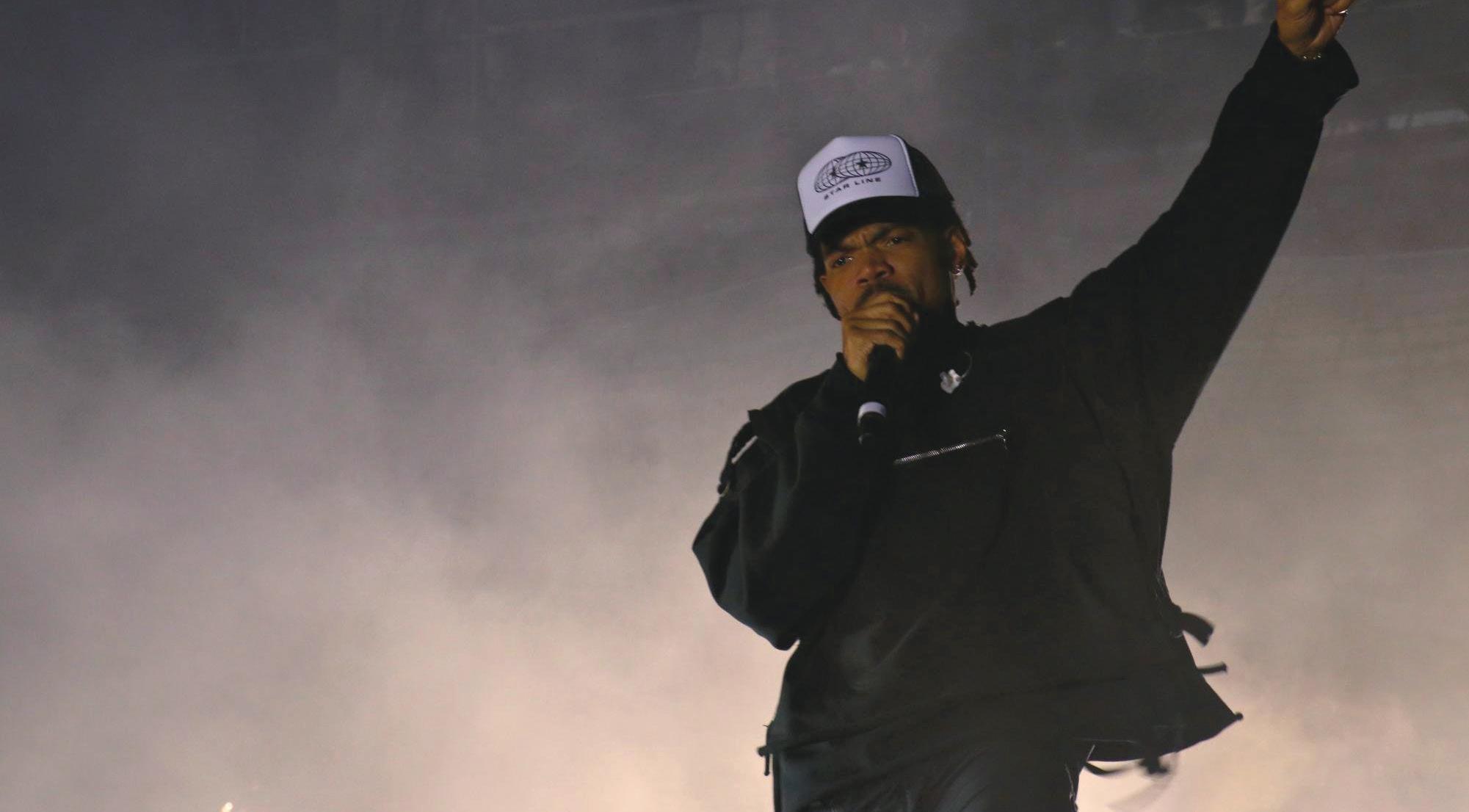
As the chords continued, Chance began to speak to the crowd.
“I hope you know your history,” he said. “I hope you guys look up what happens throughout history in Chicago anytime people try and bully us.”
Chance performed “Same Drugs” as one of his last songs of the night. As Chance looked into the crowd, he offered a positive message: “If there’s
one thing I can tell you, don’t forget the happy thoughts,” he said, referencing a lyric in the song.
As Chicago deals with political chaos and uncertainty, Chance the Rapper’s performance on Friday was a reminder that the city’s heart and soul are still very much alive.
jackgreenspan@u.northwestern.edu
Local Mojo hosts free live student performances
By CLARA MARTINEZ daily senior staffer
When Communication senior Ella Silvestri hosted a boiler room featuring a few student DJs in her basement last spring, she had no idea there would be a line out the door. Now the Local Mojo
vice president, she said she could tell students were looking for more opportunities to hear live music.
“We got three student DJs, and it ended up being a great turnout,” she said. “People had a great time. From then on, we were like, okay, we’re just gonna full send this and keep throwing these shows.”
At that point, Local Mojo was just a group of people who played in student bands or wanted to hear more live music.
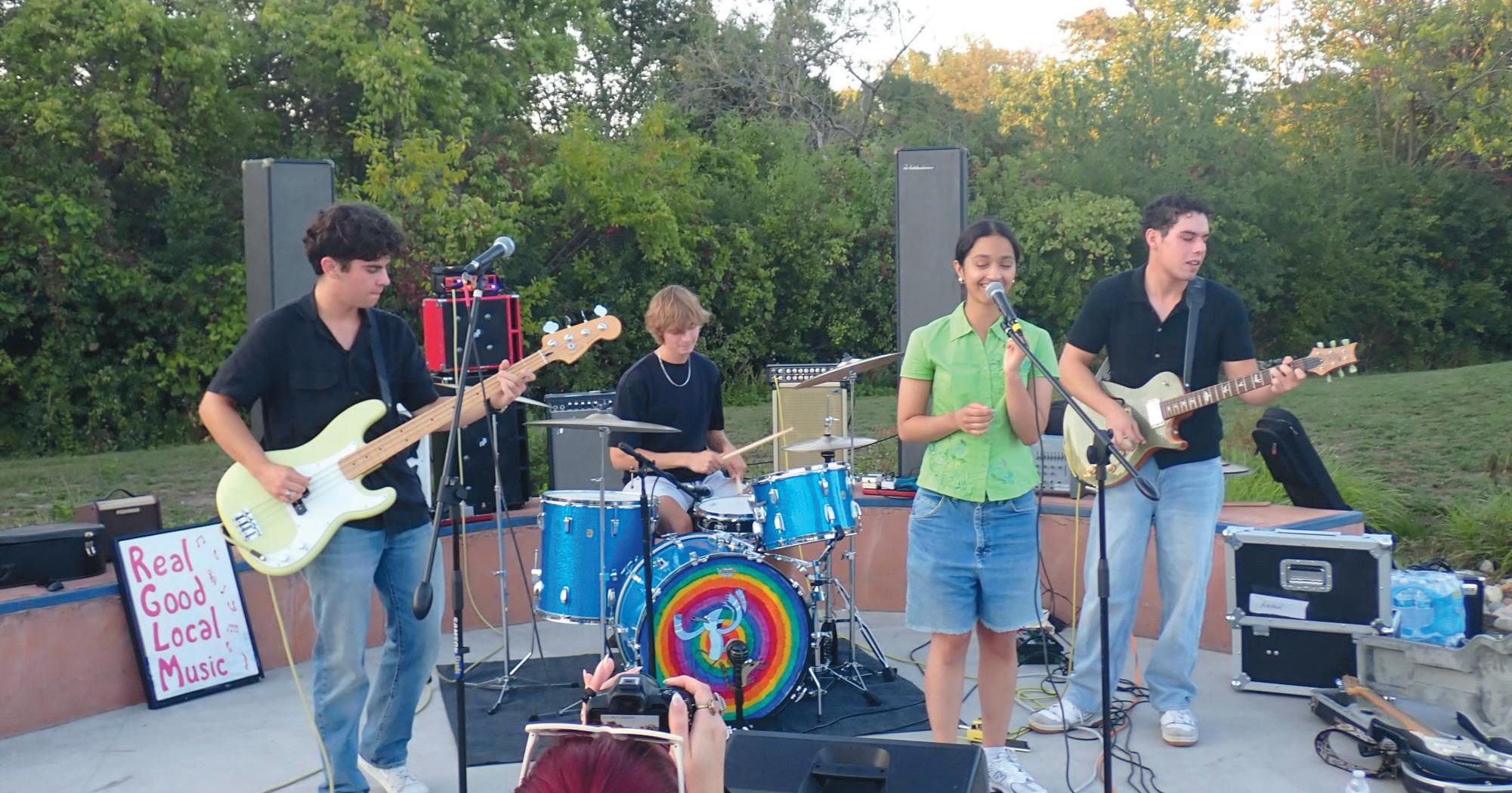
Local Mojo co-president and Weinberg senior Max Garon founded the Northwestern chapter with Weinberg junior Jack Hartfelder last year. Garon noticed that there was a lack of opportunity for student musicians to perform and form bands on campus and wanted to change that, he said.
Hartfelder and Garon reached out to Local Mojo last year about creating a Northwestern chapter and hosted their first event in March.
“I saw such an abundance of talent with so little community around it at Northwestern when it comes to music,” he said. “A lot of that comes from my own experiences – difficulty finding bands, difficulty finding shows to go to, difficulty finding people to play with.”
Undergraduates at the University of Massachusetts-Amherst created Local Mojo to promote student artists and organize events for live music produced and performed by students.
Since then, Local Mojo has expanded to create 10 student music communities across the country, from Boston to the University of Southern California.
Silvestri said their budget is small, mostly cobbled together from occasional ticketed events or merch sales. The platform’s goal is to be able to compensate artists and photographers in future events, she said.
Communication senior Anoushka Dasgupta is the lead singer for the student band The Fingerprints, which had its first performance at an event organized by Local Mojo.
The organization put on Rock at the Rock, which
brought lineup student bands out to play at the Rock on Sept 20. For Dasgupta, it wasn’t just an opportunity to perform –– The event was how she met the musicians that would form The Fingerprints.
“I wouldn’t have met them if I wasn’t helping Local Mojo with their event in the first place,” she said. “We ended up really liking how we sounded, so then we just decided that after the first event that we played at, we’re just gonna keep playing together.”
Since then, The Fingerprints has played at numerous concerts hosted by Local Mojo, including an outdoor set for homecoming weekend. While she is excited to get more involved in event planning for Local Mojo, Dasgupta also wants to keep performing on stage, she said. “You can see the immediate feedback,” she said. “People are excited, people are cheering… It’s really invigorating.”
Local Mojo is hoping to put on a new event called MojoFest in May, which would feature hours of music on the shores of Lake Michigan. They are also planning to bring more Chicago bands to campus to put on free concerts for students.
Garon said the platform is always looking for ways to bring free live music to bigger audiences.
“I love seeing how the student body reacts to it and the musicians react to it,” he said. “That’s kind of what I get out of it, and the reason that I’m kind of so motivated to be involved and keep it going, it’s just really the community.”
claramartinez2028@u.northwestern.edu
Indie horror film ‘Good Boy’ is adorable yet bleak
By JOHN RIVERA daily senior staffer
This review contains spoilers.
The latest indie horror film to hit theaters doesn’t star the usual scream queens you might expect. Forget the Samara Weavings and Jenna Ortegas of the world and welcome the star of “Good Boy”: A magnetic Nova Scotia Duck Tolling Retriever.
In his feature debut, director Ben Leonberg casts himself and his very own pup, Indy, as new residents of their late grandfather’s alleged haunted house. Released on Oct. 3, “Good Boy” follows Indy’s ever-curious nose as he explores the shadows and sounds that lurk in the night.
Shot over the course of three years with a crew of just Leonberg, his wife Kari Fischer and Indy, the final product is a feat of patience and craft. With over 400 days of filming, this was surely not a facile shoot — yet Leonberg and Fischer successfully captured a range of emotion from Indy that registers as genuine performance, double takes and all, rather than tricks on command.
Seriously, from tiny whines and whimpers, to lonely cries and barks, Indy puts on an acting masterclass. Leonberg and Fischer’s efforts to capture the panicked jolts of fear, the held stares and the adorable worried looks contribute to a nuanced construction of emotion that grounds the entire film.
Although almost entirely shot in a single house, the camerawork feels grand in scale. With daunting
wide-angle staircase frames, numerous close-ups and Indy POV shots — The audience is immediately immersed in Indy’s umwelt world. This immersion, combined with the dimly lit house and Indy’s inquisitive nature, catalyzes the film’s tension.
While the film is not particularly scary aside from a couple mild jump scares, it builds an eerily dreadful atmosphere through its score, sound design and camerawork, steadily intensifying toward the surprisingly bleak climax. After spending over an hour in Indy’s shoes, the supernatural confrontation in the film’s last ten minutes is soulshattering to any dog owner.
Let me make one thing unmistakably clear, though: “Good Boy” is merciless to your emotions, not to the dog. By the end of the film, Indy walks out physically unscathed; the audience, however, is left with a long, bittersweet exhale and a ride home anxiously awaiting their own dog’s welcoming frenzy as soon as the key turns the front door open.
“Good Boy” is admittedly not the most enthralling film of the year, but for what it sets out to be, it is absolutely worth your time. It might not be the jump-scare-packed, fast-paced crowd-pleaser that most look for with horror releases, but it is an inventive, low-budget passion project whose final shot lands with a heartfelt, poignant beauty — leaving me with a wistful half-smile and an image that will not leave my mind.
If anything, “Good Boy” is a testament to the limitless bounds of ingenuity and a brilliant exercise in creative freedom. I applaud Leonberg and
Fischer for their commitment to capturing Indy in all his silver screen glory.
My advice? Temper your expectations: “Good Boy” is minimalist and self-contained, not chasing franchise-size stakes or scares. It rewards patience
and heart. If you check this one out in theaters, be sure to stay after the credits to get a behind the scenes look at Indy in action!
johnrivera2027@u.northwestern.edu

Powwow celebrates Native community advances
By JACK BAKER daily senior staffer @jdowb2005
The Gichigamiin Indigenous Nations Museum, in partnership with Evanston Township High School, hosted its second annual Indigenous Peoples’ Day Powwow at the school’s Willie May Field House Monday afternoon.
Gichigamiin Executive Director Kim Vigue, a citizen of the Oneida Nation and descendant of the Menominee Nation, said the idea to host a powwow at ETHS arose from the school’s efforts to atone for a 2022 incident in which administrators prevented a Native student from walking at graduation after he added an eagle feather and traditional Ojibwe beadwork to his cap.
While last year’s powwow aimed to “repair and honor” the community impacted by the district’s decision, Vigue said this year’s event centered on celebrating recent achievements in Chicago’s Native American community.
Vigue specifically pointed to the Prairie Band Potawatomi Nation’s reclamation of Shabbona Lake State Park and the groundbreaking of the Jigzbik affordable housing complex, the first Native American-focused affordable housing project in Chicago. The complex will finally make good on promises associated with the federal government’s Native American Urban Relocation program, which brought many Indigenous people to the area decades ago, Vigue added.
“A lot of times Chicago’s Native community is invisible,” Vigue said. “Considering it’s a very large and diverse community, we wanted to do our part to bring visibility to this community and its diversity, resilience and strength.”
In a brief speech, District 202 Superintendent Marcus Campbell welcomed attendees and said ETHS is uniquely committed to teaching about Native communities.
“All day today, thousands of ETHS students engaged in activities and learning around Indigenous culture and contributions,” he said. “We do this today as an act of love, an act of solidarity — as partners. And I’ll also say, in a time where people are emboldened by their hate, we are emboldened by love.”
Community members observed and

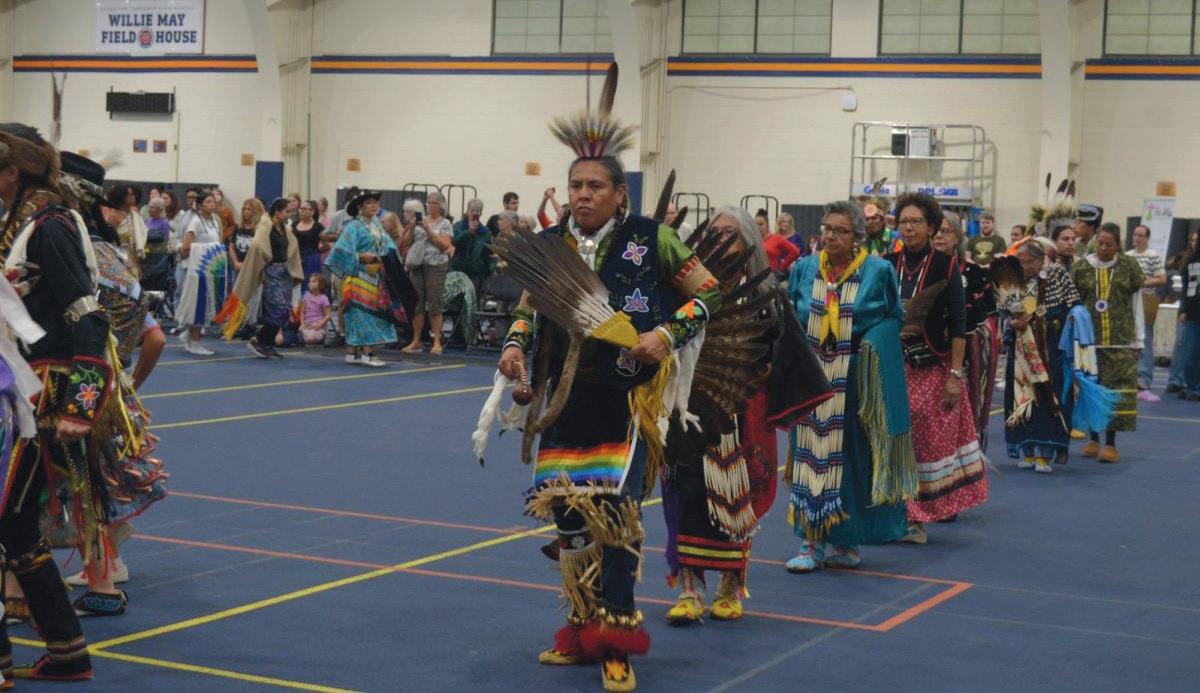
participated in dancing on the arena floor while dozens of vendors sold traditional and contemporary Native art, jewelry and food nearby.
For Andrew Johnson, treasurer of the museum’s board and founder of the Native American Chamber of Commerce of Illinois, the event presented a unique opportunity to promote Native artists and entrepreneurs.
“It is wonderful to see the number of Native entrepreneurs that are here selling their jewelry and everything,” Johnson said. “They make it all themselves. That’s what’s really, really neat — you get a personal creation from Native people who live in this area.”
Vigue said Native Americans need community events like Monday’s powwow now more
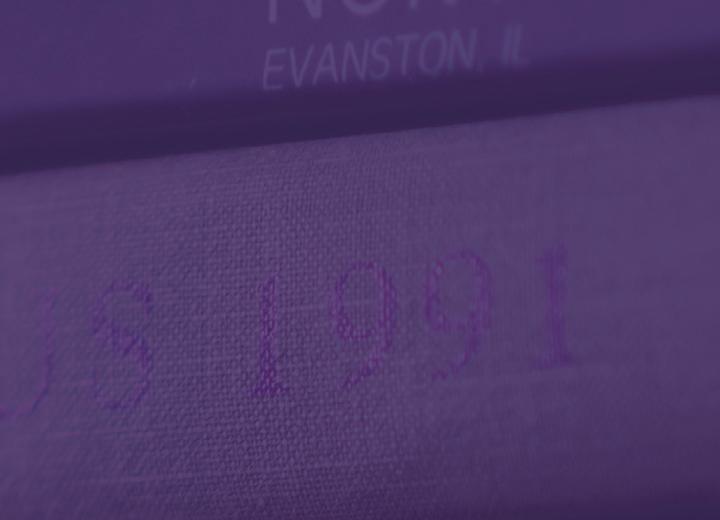
than ever, and Johnson echoed her sentiment.
Celebrating Indigenous Peoples’ Day helps community members “make a stand” against recent developments in Washington, D.C., Johnson said.
Among those celebrating was Ronnie Preston, an enrolled member of the San Carlos Apache Nation and a vendor at the powwow. He said that while Indigenous Peoples’ Day is a welcome opportunity to highlight Native culture, he takes pride in his heritage year-round.
“When I go talk and perform, I always tell people, ‘Oh, yeah, we get one day a year to celebrate being Indigenous,’” Preston said. “I’m Indigenous every day, and I wear my hair in a braid very proudly. I work with our community.”


Full-time artist Negwes White, who is Ojibwe and Navajo, said he “pretty much” makes his living dancing and selling jewelry at events like Monday’s powwow.
White said his performances help challenge stereotypes about contemporary Native life.
“My presenting creates change because kids aren’t aware of Native Americans today, in the 21st century, so when I talk about Fortnite and Bad Bunny, they’re like ‘You’re listening to that?’” White said. “I’m human just like you. I have a culture that I came from that I don’t want to forget, and I want to make sure my children know it as well.”
j.baker@dailynorthwestern.com




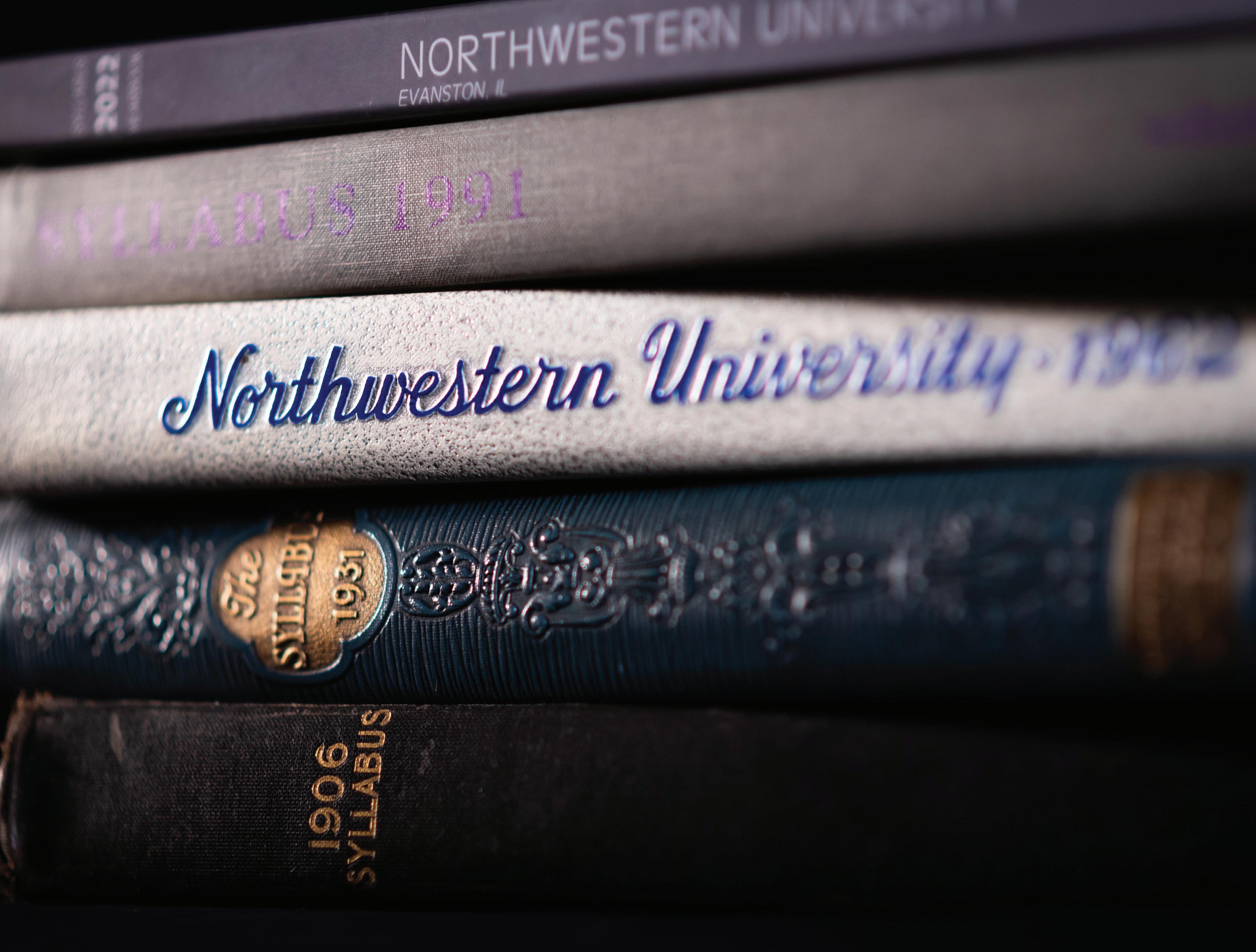
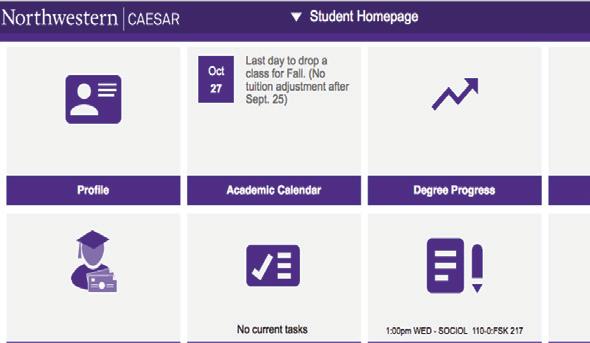
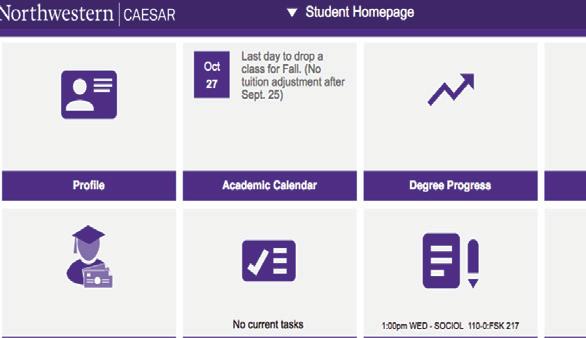






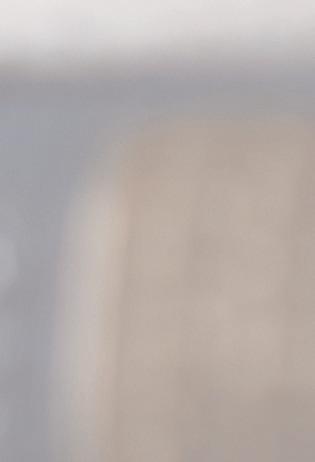



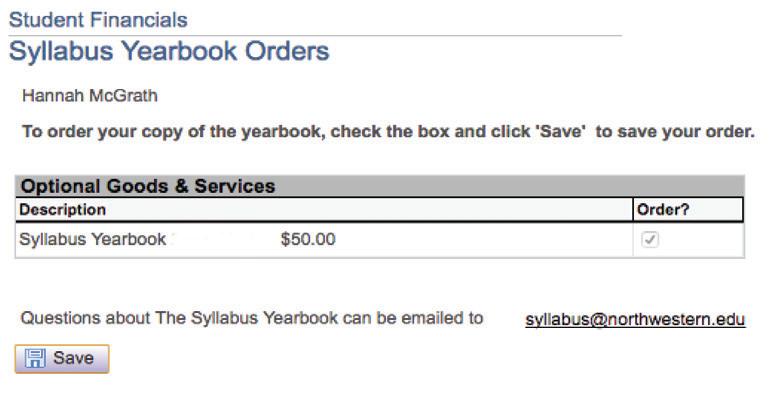





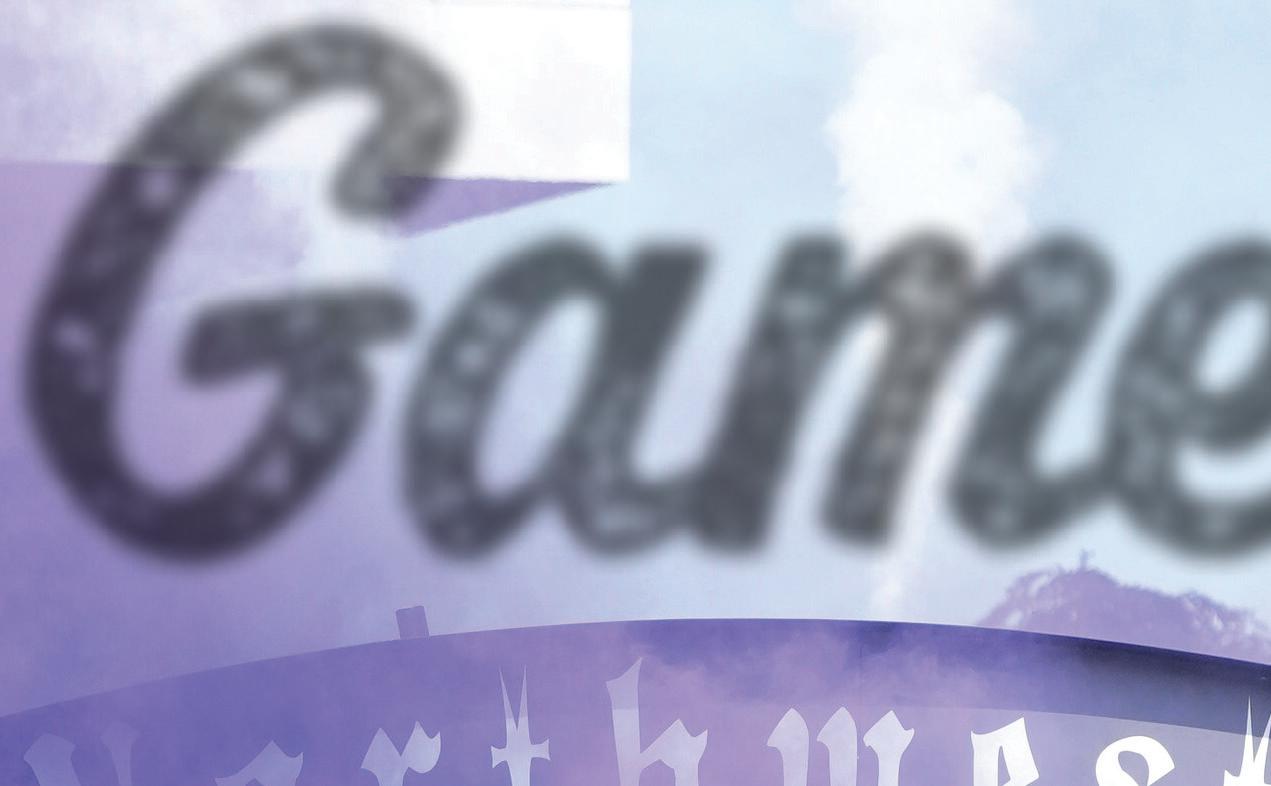

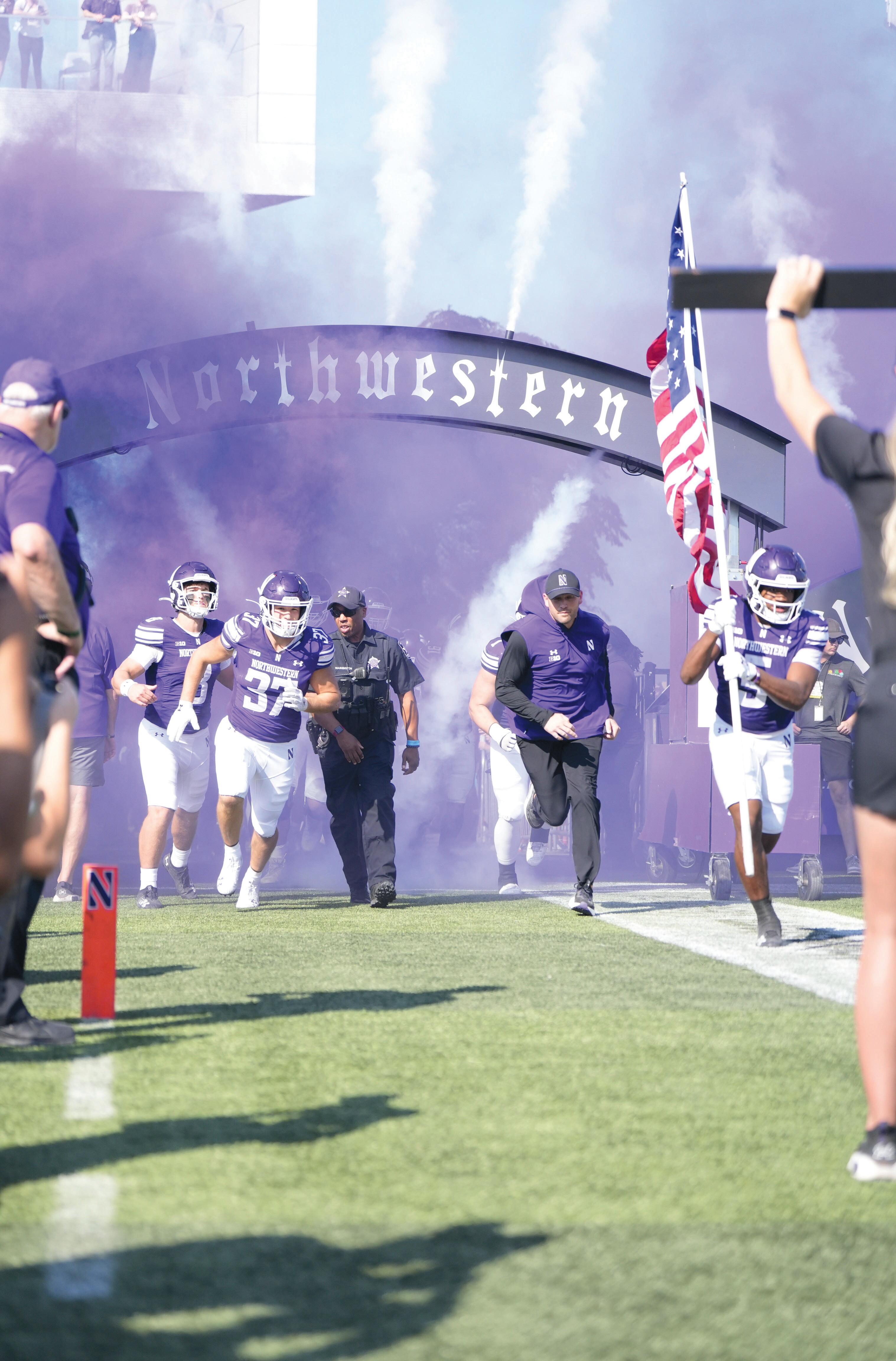
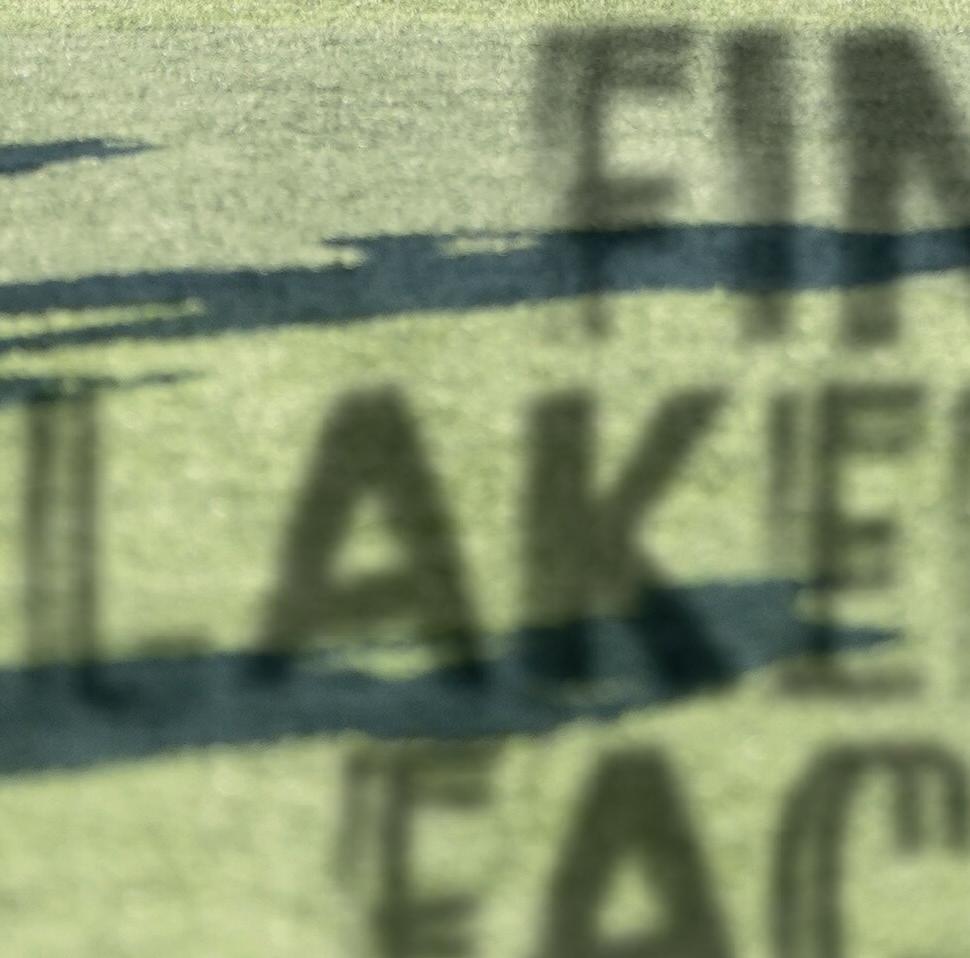
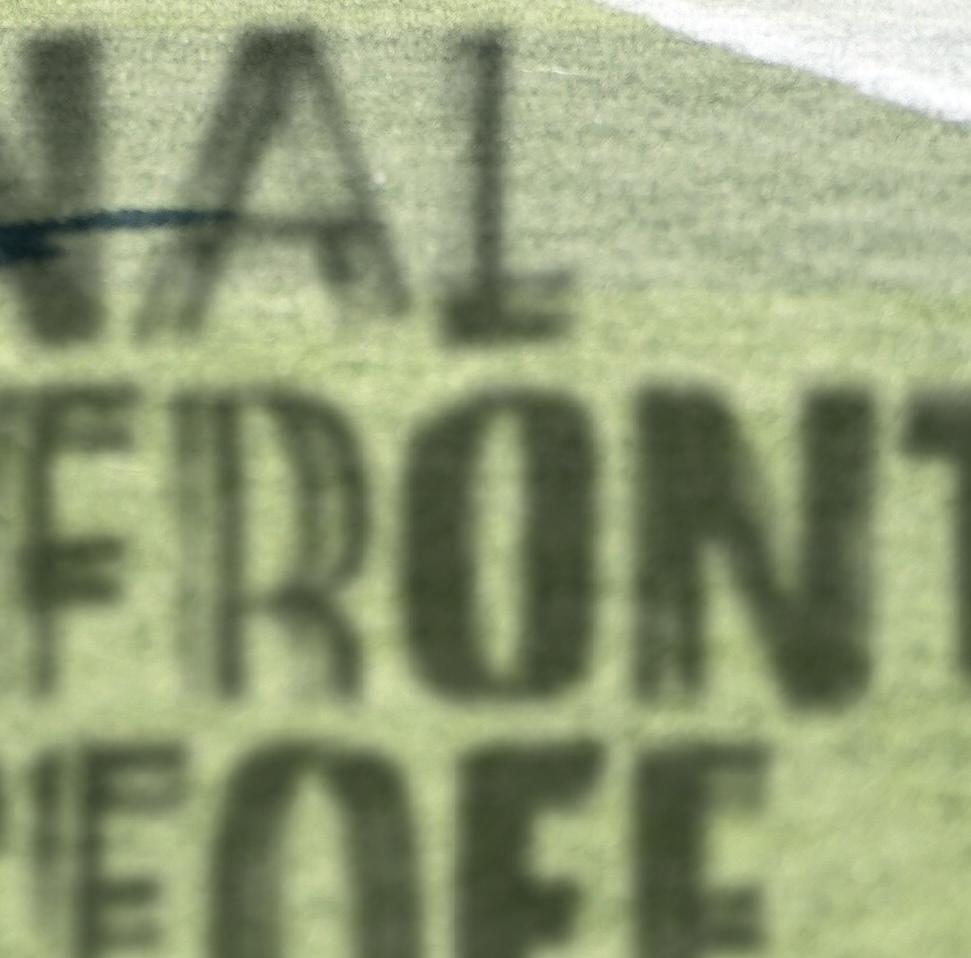


Transfer QB Preston Stone stacking wins on the field, building relationships off of it
By AUDREY PACHUTA and ANNA WATSON daily senior staffers @audreypachuta / @adub_sports
Prior to Northwestern’s shocking victory at Penn State on Saturday, graduate student quarterback Preston Stone’s last Beaver Stadium experience was not a positive one.
Relegated to SMU’s backup quarterback slot after a prolific 2023 starting campaign, Stone watched from the sideline as his team “got (their) tails kicked” by the Nittany Lions in the first round of the 2024 College Football Playoff.
So when the Dallas-native transferred, packed up his life and moved to Evanston in January, a chance for retaliation in Happy Valley was something he circled on his calendar.
“Big Ten football simply is just different,” Stone said at an August press conference. “I can’t wait for the ’Cats to go to Penn State and play them this year.”
Flash forward to Week 7, and NU’s transfer signal caller got the bounce-back performance he hoped for, overcoming seemingly insurmountable odds against an opponent favored by three touchdowns to deliver a 22-21 win.
After Stone ended the contest in victory formation, kneeling the ball three times to run out the clock, he immediately found coach David Braun to give him a big hug, he said. Afterward, the team celebrated with a party in the locker room, which he described as something he’ll remember forever.
“It was definitely one of those games you dream about as a little kid,” Stone told The Daily after the Wildcats’ (4-2, 2-1 Big Ten) Tuesday practice.
Building a rapport
While an NU squad that limped to a 4-8 record last season, taking down what was a CFP semifinalist, may come as a shock to most onlookers, to Stone, high-quality wins aren’t surprising for a team he holds in high regard.
Before the season, Braun routinely referred to his receivers as an “unproven” group, conceding that many of them had a “chip on their shoulder” and hadn’t delivered many noteworthy performances early in their careers. After a 2024 season where the ’Cats averaged the worst yardage and second-lowest scoring output per game and in the Big Ten, the third-year coach didn’t shy away from the work to be done on offense.
But Stone was quick to convey his optimism in the hands on the other end of his passes.
“I have a ton of confidence in those guys,” Stone said during the preseason. “I think we have one of the best receiving rooms in the country.”
Receivers weren’t the only ones who have earned Stone’s unbridled trust. When asked Tuesday about the progression of NU’s offensive line since the team’s season-opening loss at Tulane, the veteran playmaker echoed what he previously said about the guys downfield, calling the O-Line the nation’s preeminent force “hands down.”
For Stone, cultivating trust among teammates is an essential element in the ’Cats’ recipe for success. He said Braun’s promise of a player-led team is one of the key factors that drew him to NU as he navigated the transfer portal.
With six games in a purple jersey under his belt, Stone described the team as “fully assimilated,” meaning that the work he put in to earn respect across the locker room has paid off. His days of being the new guy in town have gone by the wayside.
In a July interview at Big Ten Football Media Days, the transfer passer said his top priorities when he first arrived in Illinois in January were proving his work ethic on the field and building relationships off of it.
During his first week at NU, defensive players Aidan Hubbard, Carmine Bastone, Braydon Brus
Stone on a roll
and Mac Uihlein invited him over to their house for dinner, making it easier for him to establish some crucial early bonds on the roster.
“(It) just speaks to the kind of guys they are,” Stone said Tuesday, reflecting on the experience.
Redshirt junior edge rusher Anto Saka, who was also at Big Ten Media Days, called Stone a “gamer” and said his camaraderie stuck out to him early on.
“If y’all squatting, I should be squatting,” Saka said, paraphrasing Stone’s practice philosophy. “If I’m benching, then y’all should be benching, and vice versa.”
Aside from dinner with teammates and putting in time at workouts, Stone said it definitely helped being in a “beach town,” which he considers to be a defining characteristic of Evanston. After spring and summer practices, Stone and other players routinely hung out by the lake to cool down.
In the quarterback room, Stone built early bridges when he asked his fellow position players where he should take his girlfriend on dates. Ironically, the player who recommended Stone’s eventual choice was his starting predecessor, who has since transitioned to play baseball full-time instead.
“It was actually Jack Lausch that texted me Trattoria Demi, which is my favorite restaurant in all of Evanston,” Stone said.
The start of something great
Stone’s days on the gridiron began long before he worked to forge new bonds ahead of his final year of college eligibility. The youngest of three brothers who all played Division 1 football, he said growing up in “the epitome of a football family” is something that’s shaped his game.
Stone got his start in football playing running back, but his older brother, Lindell, was a quarterback. The youngest Stone wanted to follow in his footsteps.
known as probably one of the top private school programs in Texas,” Novakov said. “He put us on ESPN. He built that.”
Since the quarterback is the foundational piece of any program or team, Stone’s arrival as one of the top-rated ninth graders drew recruiters and coaches, which attracted kids who wanted to play for the team that people were coming to see.
Novakov said Stone brought Parish Episcopal instant credibility and notoriety by just being there.
Even better for Novakov, Stone backed it up on the field. After a 5-7 start in his freshman year, Parish Episcopal went 10-4 during his 2018 season. That same sophomore season, Stone was a captain of the team.
“He never missed a weight workout, never missed a practice, never missed a game. He always was at everything,” Novakov said. “Even though he would skip recruiting visits (and) all-star games, he made it all about the team.’
In 2019 and 2020, Stone led Parish Episcopal to TAPPS Division I State Championships.
As a senior, Stone passed for 3,429 passing yards and 38 touchdowns while rushing for 536 yards and 10 touchdowns.
The success earned Stone all the offers a high school quarterback could ask for. A school from every then-Power Five conference came knocking for the Texas quarterback.

NU’s eventual passer’s knack for football was evident early on, especially to his high school coach, Daniel Novakov. Novakov first got his eyes on his future quarterback during the spring of his fourth-grade year.
While doing quality control for the NFL’s Dallas Cowboys, one of Novakov’s assignments was to coach Jerry Jones’ grandson’s 11-man football team. The publicity and success he garnered from the position earned him another coaching job for kids in his neighborhood the following year. Now, he’s been doing it ever since.
Stone ended up getting on one of those teams, and, for Novakov, the talent was undeniable from the time he first saw a video of Stone throwing.
“I’ve had three power five quarterbacks now,” Novakov said. “You can tell immediately. They’re very different. It’s kind of like when a kid has a gift to play the piano or they’re really good at math, that gift just stands out. It’s like it was given to them by God.”
Novakov got the chance to coach him at various times during the spring throughout his middle school career, and even in high school. Novakov earned a promotion to become Parish Episcopal School’s head coach in 2017.
That same year, Stone chose to begin his high school playing career at Parish Episcopal over perennial Texas powerhouse Highland Park High School.
“I had a ton of faith in coach Novakov,” Stone said. “I felt like I would definitely be taken care of from a football perspective there. Also, Parish is a great school, and so I thought it would set me up best for my future.”
The decision not only gave Stone a platform to play during his freshman year, but Novakov said it also helped Parish Episcopal become the football power it is today.
“He jump-started our program, which is now
But among offers from Alabama, Ohio State and Texas, Stone chose SMU.
Between a Stone and a hard place
Choosing SMU made sense for Stone. His father graduated from SMU and his brother Parker played wide receiver for the Mustangs. Stone grew up loving SMU, and, according to Novakov, he wanted the opportunity to bring unseen success to the program in his hometown.
After breaking his collarbone in 2022, Stone got his chance to lead the Mustangs in his redshirt sophomore season.
Stone spearheaded a SMU team that went 7-6 the year prior to only two regular-season losses, but the season ended on a sour note for the quarterback. In the final game of the regular season against Navy, things went south.
“I would always argue with him about, ‘Quit running around, especially when you don’t need to because that’s how quarterbacks get hurt,’” Novakov said. “So they were killing Navy, and he’s playing his best game. He runs around, in my opinion, needlessly, he gets tackled, falls on his leg awkwardly and breaks his leg.”
Though throwing three touchdown passes before the second-quarter injury was enough to help lift the Mustangs to an American Athletic Conference championship-clinching win, Stone did not have the honor of playing in it.
“It was a bit of a heartbreaking moment for me because you played those games with the hopes of making it to the championship and bringing home that championship,” Stone said.
Instead, his teammate, Kevin Jennings, threw for 203 yards and one touchdown in his first career start and led SMU to its first AAC Championship.
Stone attempted to mount a comeback in 2024, initially splitting time with Jennings before taking a backseat when the latter was named the starter.
“It was not an easy decision in terms of the fact that Preston’s a winner,” SMU coach Rhett Lashlee said at the time. “We feel like (Jennings) gives us the best chance to win with this team.”
While Stone did not see the time on the field he would have liked, the 2024 season was still a useful one.
Standing on the sidelines, Stone said he learned the value of “servant leadership,” noting the need
to separate his personal adversity from his role as a teammate.
“You play and you train with the hopes of being able to be on the field on Saturday, and I think learning last year, watching from the sidelines and trying to support Kevin as much as I could, you learn the importance of doing your job, whatever that may be,” Stone said.
Following a 2024 campaign spent in the shadows, Stone opted to depart SMU in pursuit of new frontiers. Despite expressing discontent with his final season in Dallas, he said he has no bad blood for his former school and still roots for the Mustangs on Saturdays.
‘The most important stat’
From Braun’s perspective, the decision to recruit Stone once he entered the transfer portal was a no-brainer. In preparation for NU’s Sept. 6, 2024, matchup with Duke, Braun told Big Ten Network his team watched an abundance of SMU’s 2023 film since its offensive coordinator had left his post for the Blue Devils.
“The second that Preston went in the transfer portal, as a program (we said), ‘The quarterback from SMU? We gotta go get that guy,’” Braun said.
While Stone’s deep pass threat immediately got Braun’s attention, he was more impressed by the way he carried himself off the field, taking on a leadership role the moment he arrived in Evanston.
During the recruiting process, Braun didn’t promise Stone that starting spot because he views competition as a “core value” of the program. Instead, he told the former Mustang that if he opted to come to NU, he didn’t have to “be anything but the best version of (his) self,” Stone recalled.
“What he did throughout the offseason and what he put on display throughout spring, it was abundantly clear that he was our starting quarterback,” Braun told reporters ahead of the season.
Since then, his confidence in the graduate student passer never wavered, even after Stone’s season got off to a rocky start in a 23-3 loss at Tulane. In that game — Stone’s NU debut following four years in Dallas — he threw four interceptions and fumbled on the team’s opening drive. Compared to the 2023 performances Braun had watched on tape, his shiny new quarterback looked markedly different than he had two years prior.
“I think something coach Braun and coach (Zach) Lujan did a great job of was getting us to look at the game as objectively as we can,” Stone said. “... (I) wasn’t making bad reads, I was just missing throws that I’ve been making since I was in high school.”
Since then, Stone has found his rhythm in his final year of eligibility — other than an additional two picks in a 34-14 loss to then-No. 4 Oregon.
He’s thrown for five touchdowns across NU’s last three contests, hovering around a 65% completion rate as he’s established a rapport with receivers beyond his go-to guy in junior wideout Griffin Wilde.
But if you ask him, these stats don’t matter.
“I completely agree with coach Braun that the most important stat for a quarterback is how many wins you get,” Stone said. “… If we hand the ball off 100 times and still win a football game, I’ll be just as happy.”
On the heels of a win at Penn State, where his individual performance was neither glowing nor dull, Stone has embodied that doctrine in his play. He’ll look to carry his prevailing form into a Saturday showdown with Purdue, as the ’Cats vie for their fourth-straight victory.
“Winning feels good, all the time,” Stone said. “We’ve done a great job of responding to adversity early in the year, and now it’ll be a test for us to see how we respond to success.”
audreypachuta2027@u.northwestern.edu
annawatson2027@u.northwestern.edu
bUn UtNg
By ANNA WATSON daily senior staffer @adub_sports
Northwestern grabbed a potentially seasonde ning victory at Penn State on Saturday, but for coach David Braun and his squad, there is no time to dwell on it.
e Wildcats (4-2, 2-1 Big Ten) are right back in action this Saturday against Purdue in their nal game at Northwestern Medicine Field at Martin Stadium before playing the remaining home games at Wrigley Field.
“You can squeeze that enjoyment into that evening,” Braun said Monday, referring to his team’s recent upset victory in Happy Valley. “But man, if you are not onto the next step when you’re in the midst of a Big Ten schedule, you’re exposing yourself to a letdown, and in this league, there can’t be any letdowns.”
Facing a Boilermaker (2-4, 0-3 Big Ten) team that has lost four consecutive games, NU will look to surpass its 2024 win total by securing a h victory Saturday.
Here are three storylines to monitor ahead of Saturday’s home matchup.
Penn State a ermath
Even though NU operated at a high level to leave
By ALEX BOYKO daily senior staffer
On the back of last week’s upset win over Penn State, Northwestern will once again play one of its most meaningful games of the season so far, for a litany of reasons.
Saturday’s meeting with Purdue (2-4, 0-3 Big Ten) has picked up major postseason significance for the Wildcats (4-2, 2-1 Big Ten), as victory would put the team one win away from definite bowl eligibility.
NU’s stint in the Friendly Confines in the




the raucous Beaver Stadium with a win, according to Braun, there is still work to be done ahead of the matchup with the Boilermakers.
“When you are objective, looking at the lm, there are some glaring issues that we need to get resolved right now,” the third-year coach said.
Braun cited the blocked and mu ed punts that killed momentum early in the contest against the Ni any Lions. Ultimately, though, the Ni any Lions su ered the toughest blow.
A er the loss, Penn State parted ways with longtime coach James Franklin. With the success Franklin had over 11-plus seasons with the program, Braun called the move “shocking.” Braun also referenced the other coaches, family, support sta and players impacted by the news.
On the other hand, the ’Cats had a pleasant time following Saturday’s wins. Having moments of celebration with players and sta in the locker room, ge ing back on the bus and boarding the plane all stand out to Braun as notable memories.
“ ere’s something really special about going on the road in the Big Ten and nding a way to come home with a win,” Braun said. “You’ll cherish those because they are relationship-driven. You’ll cherish those moments for life.”
But now, NU is onto Purdue.
Honoring 1995 Rose Bowl Team
2025 marks 30 years since the famed 1995
Wildcat squad forged an improbable trip to the Rose Bowl.
is Saturday, the ’Cats will celebrate what Braun called one of the most iconic teams in the history of college football. NU will don new, black throwback uniforms, reminiscent of those worn at the Rose Bowl.
“(It’s an) opportunity to honor an incredible coach, an incredible group of players, incredible group of coaches,” Braun said.
Braun said Monday that some of the best programs he has been a part of have reverence for what came before them. Recently, Braun’s respect for coach Gary Barne , who led the 1995 Rose Bowl team, has been evident.
Along with invoking Barne ’s “expect victory” phrase, a morale-boosting exercise of the former NU skipper that Braun said he learned through Joel Kla helped the squad get back on track a er the loss to Oregon.
Braun said that, at the beginning of every season, Barne went through an exercise of encouraging his team to think about “who are we, where are we going and how are we going to get there.” Over the post-Oregon bye week, the program went through that same exercise.
e ’Cats haven’t lost a game since.
Braun and his squad’s energy is turned towards properly paying tribute to the 1995 team that came before them.
Keys to Purdue matchup
One of the most reliable traits of NU’s o ense this season has been the rushing game. e ’Cats average more rushing yards per game than passing yards. is week, they will face a Purdue squad coming o a dominant performance in stopping the run. In their loss to Minnesota, the Boilermakers held the Golden Gophers to just 30 total rushing yards. Minnesota averages 112.3 yards per game on the ground.
Braun said Purdue “presents a lot of problems” as a well-coached team with good personnel, which extends to the o ense.
“O ensively, they are going to tempo you,” Braun said. “Very talented on the perimeter. Quarterback is a competitor, does a good job in the pass game, extends plays and can be utilized in the quarterback run game.”
Even with their assets, the Boilermakers have not been able to put it together in conference play. rough this point in the season, Purdue has Big Ten losses to Minnesota, Illinois and USC. ough the results haven’t been pre y, Purdue has shown its ability to put points on the board against these teams, especially if factoring in the 30-point performance against then-No. 21 Notre Dame.
annawatson2027@u.northwestern.edu
final weeks of the season also makes this midOctober battle the ’Cats’ on-campus finale — and the team’s last game on the lakeshore with the new Ryan Field set to open in 2026.
However, it takes a look back into the annals of NU history to understand why neither of those reasons may be the most significant heading into game day.
Thirty years ago, the ’Cats etched their name into the storybook of college football. The 1995 Rose Bowl team, to this day, remains a quintessential example of the lovable underdog that so often captivates the hearts and minds of sports media and fans across the country.
NU struggled mightily in the 70s and 80s,
never finishing in the top half of the Big Ten and at one time losing 34 games in a row, an FBS record that stands to this day. And then came 1995.
There was no buzz around the ’Cats as they kicked off their season, as the program that hadn’t won its opening game once in the past 20 years played its first game on the road against No. 9 Notre Dame.
Despite being four-touchdown underdogs, NU never trailed, and the ’Cats’ 17-15 victory was the first of many in what turned out to be a magical year.
The team won double-digit games for the first time since the Wright Brothers achieved powered flight. NU ranked as high as No. 3 in the AP poll and played in the second bowl game of its over-100-year history.
and to finish out the season in Pasadena. Since, the black jerseys have become a symbol of that now-legendary season.
With this season now marking its 30th anniversary, NU will honor the successes of the ’95 squad as the team reunites for Saturday’s game against the Boilermakers. The ’Cats will debut their throwback uniforms, an all black set reminiscent of the program’s iconic past, as Martin Stadium hosts a Black Out football game for the final time.
“It’s one of the most iconic teams in all of college football history,” coach David Braun said ahead of Saturday’s festivities. Braun cited Barne as a source of inspiration for how he approaches coaching at Northwestern, and his remarks following the Penn State game were reminiscent of the famous “Expect Victory” mo o that Barne coined during that season. For NU’s head coach, commemorating that team is all about the play on the field.













It was a storybook season for the ’Cats. The team wouldn’t get its fairy-tale ending — as NU lost 41-32 to USC in the Rose Bowl — but the journey completely changed the trajectory of NU Football.
In the 20 years leading up to that season, NU won under 18% of its games. In the following 20 years, it won more than half and played postseason football 10 times.
“The best way that we can honor that group is having a great week of preparation and preparing ourselves to accomplish our mission,” Braun said during Monday’s press conference.
Then-coach Gary Barnett, looking for any source for a competitive edge he could find ahead of the 1995 season, turned to his son’s advice that the ’Cats should wear black jerseys. In their opening game against Notre Dame, Barnett had his players warm up in their purple jerseys, then had them change before kickoff to debut the team’s revamped black threads.
Following the upset win, NU stuck with them, wearing them in place of its usual home jerseys








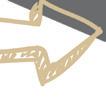
Accomplishing that mission will mean utilizing the lessons Braun learned from Barnett. Still, he emphasized how important it is for the ’Cats and the program’s fans to give their flowers to the members of the Rose Bowl team in attendance for Saturday’s reunion.
“The best programs that I’ve been around have a certain level of reverence for what has come before them, and that’s something I never want to lose at Northwestern.”
alexboyko2026@u.northwestern.edu

























frankLin’s firing a cautionary taLe
By ELI K RONENBERG daily senior staffer @elikronenberg
Drawing parallels between Penn State’s now-ousted coach and David Braun
Content warning: This article mentions sexual assault.
David Braun won’t tell it to you this way, but Northwestern’s third-year head coach is on top of the world.
Braun’s Wildcats (4-2, 2-1 Big Ten) waltzed into Happy Valley on Saturday and earned a seasondefining 22-21 victory over Penn State, coming back from behind on three separate occasions to stun a team that reached the College Football Playoff semifinal last season and entered its 2025 campaign ranked No. 2.
For a coach with something to prove after a rocky four-win season last year set off a few alarm bells in Evanston, it was a statement of epic proportions.
On the field postgame, Athletic Director Mark Jackson shared a lengthy embrace with Braun, leaping off the ground into his arms and pinching his cheeks.
There was no doubt about it. Braun was his man.
On the other sideline, the contrast could not have been more stark. Nittany Lion (3-3, 0-3 Big Ten) coach James Franklin looked a shell of a man as he gathered his troops to face the home faithful and sing the school alma mater. Peering up at a thinned-out crowd that had once numbered over 108,000, Franklin must have known his time was up.
Just two weeks prior, Franklin had his team on the precipice of an overtime win over then-No. 6 Oregon, in a game with seemingly enormous postseason implications. A game-ending interception and two unfathomable upsets later, Franklin was dismissed Sunday after over 11 seasons at the helm. It would be easy to look at this turn of events, and, as many have done, declare a moral victory for Braun.
The last time these squads met in 2023, Franklin refused to turn up the music to its usual volume at practice to help his team prepare for a muted atmosphere at the old Ryan Field, according to The Athletic. The Nittany Lions stormed into Evanston
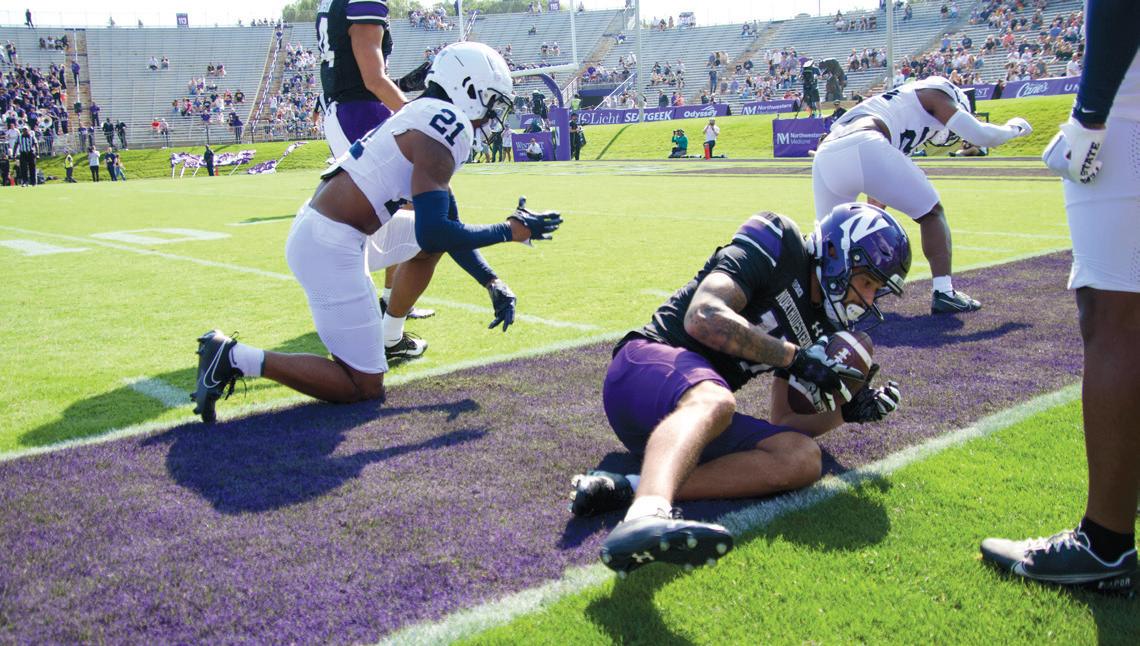
and mauled the ’Cats 41-13 that day and capped it off with a fake-quarterback-dive, play-action touchdown pass with under three minutes remaining that piled on the misery.
“I look forward to inviting Coach Franklin and Penn State back into Ryan Field and seeing what type of environment we can create for him next time he’s here,” Braun said after the game, diplomatic as ever.
That NU rang the final death knell for Franklin’s tenure, denying him the chance to visit the new Ryan Field donning navy-and-white, carries a sweet irony.
Yet, Franklin’s ouster is also a cautionary tale. After all, it was not long ago that James Franklin was David Braun, tasked with taking over a scandalridden program and restoring pride to a fractured fanbase.
Franklin arrived in State College in 2014, just two years after the Jerry Sandusky child sex abuse scandal led to the firing of legendary 46-year coach Joe Paterno. Penn State had been postseason-ineligible in the intervening two seasons due to NCAA sanctions and previous coach Bill O’Brien had bailed for the NFL’s Houston Texans.
The initial goal was not a national title. It was to lead the Nittany Lions out of the darkness, to heal, to develop a group of young men that fans could be proud of, to restore national relevance to the program.
The last time Northwestern faced Penn State, James Franklin lowered the volume of his practice music to prepare the Nittany Lions for a tranquil Ryan Field atmosphere.
And Franklin did just that — maxim by maxim, cliche by cliche. The 2016 Big Ten title and 2023 Rose Bowl may have been his crowning achievements, but the tributes from current and former players alike following his firing Sunday spoke volumes about Franklin’s biggest impact.
“S–t heartbreaking and don’t even feel real,” linebacker Tony Rojas wrote in a Sunday X post. “Wasn’t just a great coach but someone who cared about us players and wanted to develop us as men off the field too.”
“Like you always say, it starts with I love you and always ends with I love you,” former quarterback Trace McSorley added on X, echoing one of Franklin’s mantras. “Love you Coach!”
It starts with I love you and ends with I love you. All the well-documented reasons for Franklin’s sacking — 4-21 against top-10 opponents, 1-18 against top-10 opponents in Big Ten play, 1-10 against arch-rivals Ohio State — do not erase the power of those words.
Close your eyes, and it’s not hard to imagine that same refrain echoing out as Braun stands behind a podium.
The NU coach has applied the same characterfocused approach since unexpectedly taking the reins after former coach Pat Fitzgerald was fired as a hazing scandal rocked the program in the summer of 2023.
His first year in charge was nothing short of a
miracle. Instilling values of grit and accountability into the locker room, Braun guided a team that had finished 1-11 the previous season to an 8-5 record and a bowl game win.
One might think that such an instantaneous and remarkable turnaround would buy a coach time, but as the magic wore off in a sloppy sophomore season, it didn’t take long for doubts to creep in.
Some worried that Braun’s highest-level experience came as a defensive coordinator at the FCS level. Others criticized the conservative play-calling and stagnant offense under rookie offensive coordinator Zach Lujan. More still clung onto memories of Fitzgerald, aggrieved at what they viewed as a miscarriage of justice against the program’s longtime poster boy.
All those doubts were put to rest Saturday in a signature win defined by near-perfect execution on both sides of the ball — controlled aggression in offensive play-calling; big late-down stops on defense; a bruising run game punctuated by redshirt sophomore running back Caleb Komolafe’s game-winning 9-yard touchdown with under five minutes remaining.
But, as Franklin’s case shows, a lot can change in football in a very short time.
“It’s heavy. I mean, to be honest with you, if you start to process through it, it bums you out,” Braun said Monday of Franklin’s axing. “The success that he found, that he put his heart and soul and spirit into that place for over a decade, did an incredible job. And you know, to see the news yesterday was tough.”
There will come a time, perhaps in the not-sodistant future, when Braun’s doubters will have good cause to re-emerge from the woodwork. There may even come a time when he will have taken this team as far as he possibly can. But, if and when those moments come, ’Cats fans should remember how they felt on Saturday. Out of a toxic mess, David Braun has established a culture of heart, responsibility and winning football that every single person affiliated with this University can be proud of.
Don’t take that for granted.
elikronenberg2027@u.northwestern.edu
LITTLE: a far E we L l T o lak E fron T foo T ball
By ANDREW LITTLE daily senior staffer @little_andrew_3
Like half of Northwestern’s student body, as an underclassman, I have no memory of life before lakefront gamedays.
My primary experiences with the old Ryan Field are from playing as the Wildcats in the EA College Football video game, wishing the game developers had opted for a digital recreation of the scenic lakefront stadium. Although the ’Cats played at Ryan Field for nearly 100 years, it only took two seasons for the 12,000-seat Northwestern Medicine Field at Martin Stadium to feel like home.
It is hard to imagine watching an NU football game without a view of Lake Michigan or the Chicago skyline off in the distance. I’ve even gotten used to the ferocious winds whipping off the lake and the sun beating down on the student section. However, as a temporary stadium, the lakefront facility has accomplished its mission. As it plays host to its tenth and final football game, it is time to say goodbye, at least to its gridiron form. And how fitting that the final game at the lakefront stadium is against Purdue, the same opponent of the now-demolished Ryan Field’s final hurrah in 2023.
For two years, Evanston has been a destination for fans all around college football and the Big Ten. Sometimes this was frustrating, as seemingly every Indiana and Wisconsin alum in the Chicago area was in town for last year’s games. The lakefront stadium became a bucket list item for Midwest sports fans, with ticket prices skyrocketing compared to the past few years at Ryan Field. Yes, it was just a 12,000-seat stadium, but it is awesome to look out at a packed-out crowd of purple on a beautiful fall Saturday afternoon.
Every few weeks, the stadium would go viral on social media with people discovering the picturesque view of Lake Michigan. Friends from home would send me posts and articles from national outlets like Front Office Sports and Fox Sports, showcasing the lakefront stadium. I’m hoping that excitement will continue at the new Ryan Field, which will be a radically different, but still totally unique stadium that stands out in college football.

“The thing that’ll stand out to me is just how uniquely it’s Northwestern,” coach David Braun said of the team’s lakeside abode at his weekly press conference Monday. “[The] whole process to get it going, all the people that were a part in making it happen in such a short timeline, and just this creative solution to a really unique obstacle. It has been an amazing bridge to the New Ryan Field.”
After deciding to build an all-new Ryan Field at the same site as the original stadium, NU had a big decision to make on where to play games the next two seasons. The administration could have chosen to play at Wrigley Field, where the ’Cats have hosted four games since 2021 and have two more coming up this year against Michigan and Minnesota. They also could have explored renting historic Soldier Field, the home of the Chicago Bears. These venues have a lot more history and a lot more seating than the lakeside stadium. They make for nice novelties once or twice a year, as Wrigley games have become a recent tradition, but would
have greatly inconvenienced students.
Instead, NU opted to transform its lakeside practice facility into the temporary stadium we now know and love. Having games on campus completely transforms the gameday atmosphere, especially for students. Instead of getting on buses to travel off campus to Ryan Field, or hopping on the L-train to go to Wrigley or Soldier Field, students were able to enjoy an on-campus gameday like the majority of other Big Ten schools.
Braun said the benefits of being on campus also extended to the football program, allowing players closer access to their families postgame and closer proximity to team facilities.
“It’s truly home,” Braun said. “The experience for our student-athletes the last couple of years is what college football should be, and I’m glad that we were able to deliver on that.”
Earlier this season, NU hosted FOX’s Big Noon Kickoff for the first time. Normally, a 1-1 team facing a top-ten opponent would not host one of
college football’s premier morning shows, especially as a three-touchdown underdog to Oregon. Yet, the unique atmosphere of lakefront stadium attracted Fox to Evanston.
It was an awesome experience that coincided with the start of the school year, and even if poor weather interrupted plans, it gave the Wildcat faithful a chance to show their pride on national television. When I spoke to Heisman-winning Big Noon panelist Mark Ingram II and Anthony Russo, the show’s emcee and crowd host, they both cited the stadium’s location as a major selling point.
“[The lakefront set will] look great on national TV. It’ll look great on camera,” Russo said. “Would you rather hang out in a restaurant in the middle of the city or would you rather be on the beach? This is as cool of a spot as we’ve had in all of the years doing FOX Big Noon.”
On a smaller scale, Big Ten Network’s flagship show, BTN Tailgate, also visited the Lakefill last year when the ’Cats hosted Indiana. These opportunities simply would not have existed at Ryan Field or the other temporary options.
As the ’Cats move to Wrigley Field to close out their 2025 home slate and then new Ryan Field starting in 2026, do not forget to cherish the lakefront stadium this weekend. Although it was not an $850 million, state-of-the-art project like the new stadium will be, it is undeniable that the lakefront field has character.
And although I’ll miss the lakefront’s scenery paired with college football, this is not goodbye forever. This spring, the lakefront stadium hosts the NCAA Women’s Lacrosse Final Four. The new stadium is bringing high-level competitions in many different sports. A professional sport is even coming to Evanston, as the NWSL’s Chicago Stars are moving to the lakefront venue for their 2026 season. One thing that lakefront stadium is missing, however, is a signature on-field moment. The ’Cats have an opportunity to do just that Saturday, with a chance to beat rival Purdue and improve to 3-1 in the Big Ten as a parting gift for the most unique stadium in college football.
“We’ve gotta send it out the right way,” Braun said.
NU says lights out for winter tree illuminations
By CONNOR TANG
the daily northwestern @connorjtang
Northwestern Facilities Management is implementing non-personnel cost containment measures amid the University’s $790 million funding freeze by the Trump administration.
The changes — including standardized building hours, reviews of general maintenance projects and the removal of winter tree lighting on the Evanston campus — will be implemented throughout 2025.
The facilities cost containment measures will lower spending, with a “priority on decreasing spend with external resources,” according to NU Facilities’ website.
The seasonal winter lights were removed because they required “significant resources” to implement and were solely for aesthetic purposes, a University spokesman told The Daily in an email.
McCormick sophomore Jasper Weng said he feels like the winter tree lights added spirit and warmth to campus during Winter Quarter.
“I really liked the Christmas lights,” Weng said. “Especially the ones that are colored outside of Norris. I feel like they make campus a little more festive. It does make Sheridan a little more pretty when you walk up campus.”
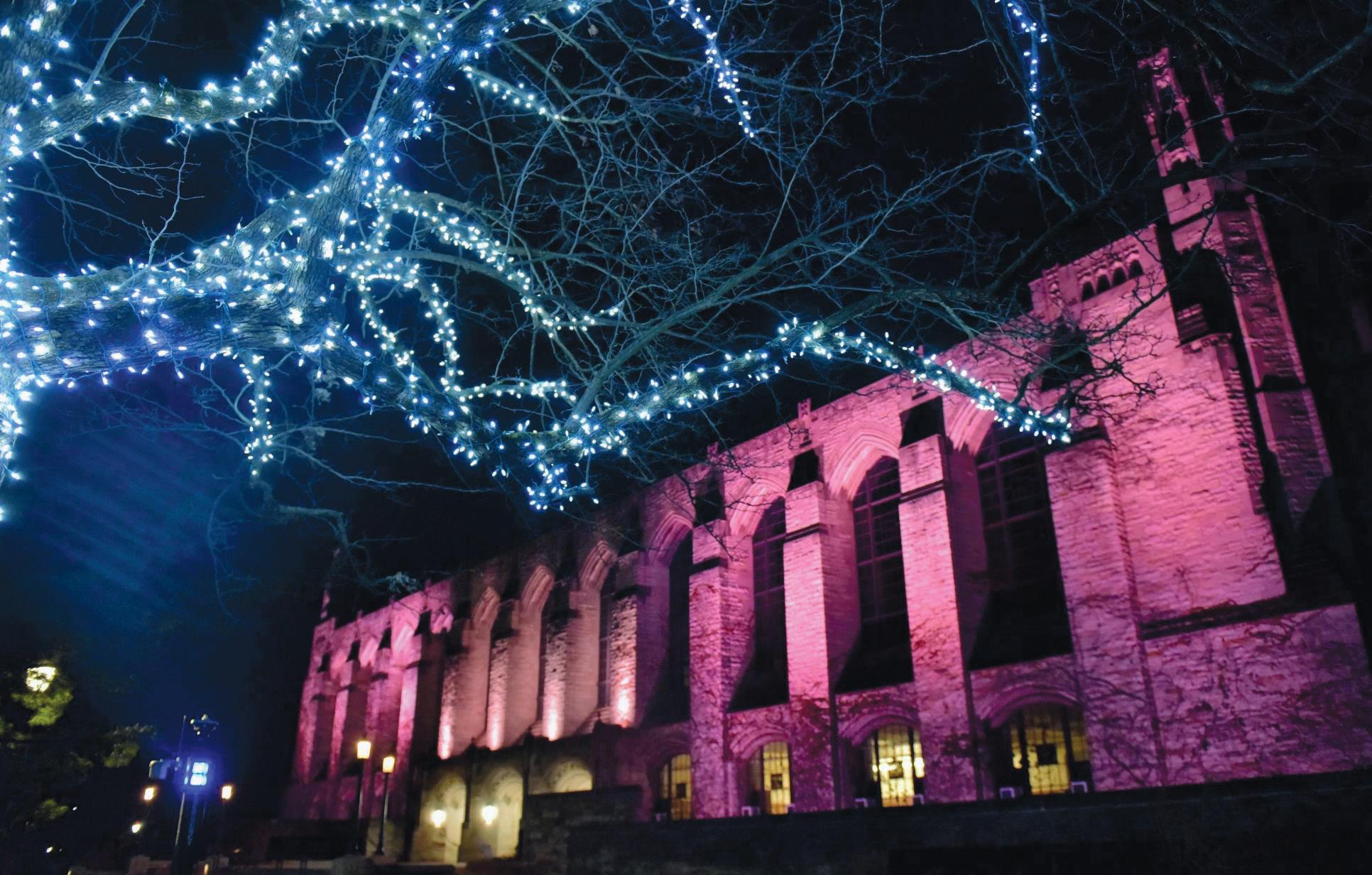
Weng said that although the budget cut will have a minimal effect on his mental health, it might have an impact on other students during the winter.
“I think (the tree lights are) one of those small things that the school does that makes it a better experience,” Weng said. “If you cut down on all the small things, it can ruin the experience.”
For some students, the tree lights added a fun flair to winter. McCormick sophomore Nidhi Thirthamattur said she was always excited to see the lights on campus during Winter Quarter when walking north to study and even climbed a tree once to take pictures with the lights.
Thirthamattur said the decorations boosted her mood during Winter Quarter, when the days got shorter and there was less daylight.
“Christmas lights, or even just holiday lights, bring joy and brightness, especially at Northwestern, where it gets really dark and gloomy at night and a lot of people are studying because Winter Quarter courses are difficult,” Thirtamattur said.
Communication sophomore Grant Irons, who is from Los Angeles, said he will miss the presence of lights on campus during the holidays, especially since he is not going home for Thanksgiving.
He said that despite not being able to be with family, the lights created an atmosphere that allowed him to enjoy campus during the break.
“I feel like those little things that they do with the Christmas decorations makes me feel like, ‘Oh, this is home right here,’” Irons said. “When I came back to Chicago last year (after winter break) and saw all those lights up again, that was like, ‘Wow, I’m reliving my childhood again. This is amazing.’ I’ll miss the lights for sure.”
connortang2029@u.northwestern.edu
Booked hosts release party in honor of children’s book
By SOPHIE GARDINER
Author and illustrator Devin Elle Kurtz debuted her new children’s book, “The Bakery Dragon and the Fairy Cake,” at a Tuesday evening pajama party hosted by Booked, an independent bookstore located on Main Street. The event, part of a countrywide tour, attracted about 50 attendees and included a live reading and signing of the new children’s book.
“As someone who doesn’t have kids yet, it is the most amazing opportunity to meet my readers to get their honest feedback,” Kurtz said. “They are
the crowd that I am most honored when I please them, and it’s so much fun to hear them laugh and see what resonates with them.”
Kurtz’s book, the second installment of her illustrated series, “The Bakery Dragon,” chronicles the journey of a tiny dragon named Ember who must overcome the difficult challenge of baking a cake for a fairy princess.
Booked co-owner Betsy Haberl (SPS ’18) said the series is a fan-favorite for many customers.
“Devin’s books struck a chord because they are written and illustrated for children to have a magical experience,” Haberl said. “It’s like if J.R.R. Tolkien’s world-building were for a picture book. It’s like you
enter in, and the whole page is covered and glowing.”
The party featured baked goods from nearby Button Bakery, including an assortment of frosted sugar cookies decorated like fairy cakes. Children in pumpkin onesies wore fairy wings and held princess wands as they engaged with Kurtz.
Evanston resident Hayden Schoen brought his two sons to storytime. He said that bringing his children to book events connects them to the community in a way that also spurs a love for reading.
“Getting to see my kids connect with the actual author of the book is really cool,” Schoen said. “They get to see an example of somebody who’s making something and shows them that this is
something they could actually do.”
After reading her books to the audience, Kurtz confirmed books three and four of the series were in the works.
Haberl said that as book prices rise, it’s important for her as a bookstore owner to think about what books people would want to keep as a “beautiful object in their home.”
And I like to think ‘Okay, the books that we buy should be books that are ones you want to pass down to your grandchildren,’ and I think Devin’s books fall into that category,” Haberl said. sophiegardiner2029@u.northwestern.edu





Yessenkulova: Between campuses in the middle of desert

I’m writing this while waiting for the tram from Carnegie Mellon to Northwestern — a three-minute ride instead of the three-hour flight it would take between their campuses in the United States. That’s Education City in Doha, Qatar: six American universities connected by one looping track and shared Wi-Fi.
It looks like a single campus, but it’s really multiple American universities sharing one patch of desert. The Qatar campuses of NU, Georgetown, Carnegie Mellon, Texas A&M, Virginia Commonwealth University School of the Arts and Weill Cornell Medicine sit side by side, making an unlikely neighborhood of universities in the Qatari capital. Right in the middle sits Hamad Bin Khalifa University, the only local one.
It’s easy to forget these are separate universities, each one with its own rules, culture and sense of seriousness. Georgetown’s sandstone halls feel diplomatic and orderly, VCUarts is creative and chaotic, while Cornell’s medical building feels almost poetic in its austerity
LTE: NU must give up Ryan Field funding to save vital research
Northwestern faces an existential crisis. The Trump administration’s freezing of $790 million in research funds strikes the very heart of NU’s identity as a center of vital research. Board of Trustees chair Peter Barris and interim President Henry S. Bienen said the University will continue funding critical research at least until the end of this calendar year. But what happens after Dec. 31? “(If) research at Northwestern collapses entirely, we shut down as a research institution,” warned McCormick professor Justin Notestein. Other faculty members are taking a tough but pragmatic approach to a possible funding cut-off. Weinberg Prof. of molecular biosciences Curt Horvath said he will preserve essential research funds by cutting “nonessential programs” in his department. His approach should extend University-wide. NU’s top leaders must perform a kind of fiscal triage, focusing on what is essential to the University and discarding what is not.
NU’s most nonessential project, in my view, is also its most expensive — rebuilding Ryan Field. The 35,000-seat structure, scheduled to open in 2026, is now estimated to cost $862 million, Front Office Sports reported, which would make it “the most expensive college stadium in the country.” Shirley and Pat Ryan
with no direct light and long hallways — a space designed to mirror the intensity of medicine and the prison-like atmosphere that comes with it. Northwestern sits somewhere in between — glass, bright and a little too put together.
When I first came to Evanston, I was amazed by the size of it — It was all one Northwestern. Education City is the opposite. Each university has a single building and only a few majors, making the place feel more like a neighborhood than a campus. Walking from NU-Q to Georgetown is similar to going from Annenberg Hall to the Technological Institute in Evanston — same muscle memory, different humidity.
It’s hot here — the kind of heat that humbles you quickly. You notice how the city and the campus start to blur together: a skyline in the distance, a classroom in the foreground and the sun as a constant reminder that you’re studying in the Gulf — not the Midwest.
Though it is larger, Education City feels smaller than the Evanston campus. It’s compact, contained and almost walkable. Almost. You can cross it on foot in fifteen minutes, but I wouldn’t recommend it unless you enjoy slow-roasting. Doha heat doesn’t negotiate. That’s why everyone lives by the tram.
What makes this place worth the sweat isn’t
its architecture or novelty. It’s the mobility. You can take classes across universities or even declare a minor outside your school.
I’m pursuing a Film and Design minor, a joint program between VCUarts Qatar and NU-Q. An NU-Q media student can study economics at Georgetown, art at VCUarts or biology at Carnegie Mellon.
And the best part? Cross-registered classes don’t affect your GPA, which is probably why my French professor sees me so rarely. That’s the hidden charm of Education City: the safety to explore your academic interests without penalty. You can take something out of pure interest and not spiral if it doesn’t come naturally.
It’s also fun to play a quiet guessing game: Which university does that person go to? You think you can tell by their NU hoodie or Georgetown tote, but don’t be fooled. Most events here are open to everyone, so half the people wearing NU-Q merch might actually be engineers, artists or med students just here for the snacks.
Another big thing I love about Education City are the gyms. There are more than five mixed-gender gyms across campus and female-only ones too. This means if you’re a woman, you get double the options. They’re different from the Henry Crown Sports Pavilion in Evanston, where no matter when you go
LETTER TO THE EDITOR
have donated $480 million of the total cost. This leaves the University obligated to fund the remaining construction cost of $382 million.
In addition, NU pledged to give Evanston $100 million over a ten-year period in exchange for approval to host concerts and other public events. This brings the total price tag to $482 million for a project that primarily benefits student athletes and, more specifically, male student athletes.
I feel that NU should divert this money to preserve vital research that saves, improves and prolongs people’s lives. One recent example is the world’s smallest pacemaker, developed by McCormick engineers and Feinberg researchers to treat infants with heart defects.
McCormick Prof. John Rogers, who led the engineering team, hopes this project will inspire others to pursue research careers. But that inspiration will vanish if funds disappear.
Note that I proposed diverting, but not entirely eliminating, Ryan Field funding. If the Trump administration restores NU’s research funds, NU can resume funding Ryan Field. Most of Columbia University’s research funds will soon be restored, and negotiations are underway with Harvard for the same goal. NU’s status is currently unclear.
Diverting Ryan Field funding raises the question of where the Wildcats will play in 2026. There are three options:
1. They can continue playing at Northwestern Medicine Field at Martin Stadium, which the Wall Street Journal called “the hottest ticket in college football,” because of its
stunning view of Lake Michigan. Fox Sports telecast NU’s home game against the University of Oregon on Sept. 13, including hosting its popular “Big Noon Kickoff” program on the Lakefill. Sportscasters seemed impressed with the roughly 12,000-seat venue, which added new audio and visual features.
2. They can play games at Wrigley Field (41,649 seats) on Chicago’s North Side, roughly 10 miles from Evanston, which they have done in previous years after the end of the baseball season, hosting Ohio State and Iowa at the venue in 2024 and 2023, respectively.
3. They can play at Soldier Field (63,500 seats) on Chicago’s South Side, roughly 15 miles from Evanston, which would be available to the Wildcats on Saturdays. The Chicago Bears play on Sunday, Monday or Thursday. The distance from Evanston may seem daunting, but a reporter for The Daily recently made the trip to see a performance of Oasis. NU can charter buses to bring students there for Wildcats football games.
Under NU’s current financial constraints, each of these options make more sense than spending nearly half a billion dollars on a lavish showcase for graduate transfer students to score touchdowns and profit from name, image and likeness payments.
Don’t get me wrong: I root for the Wildcats and enjoyed watching them play in what was then called Dyche Stadium during my time as a Medill graduate student from 1962 to 1964. But football fever should not obscure harsh economic realities. NU’s Board of Trustees
Slotkin: I still wear your sweatshirt
COLUMNIST

As a kid I collected paper towel and toilet paper rolls for arts and cra s. Now, I collect rubber ducks, library cards and articles of clothing from boys I’ve been romantically involved with in some capacity.
Does this make me a kleptomaniac? I don’t think so. Especially since nobody has asked for any of their stu back. Except for one boy from freshman year, but I gave it back — I had to, he had one of my shirts and proposed a swap. My collection is an impressive hoard: a few t-shirts, a couple pairs of socks, a hat, baseball jersey and, of course, the most coveted items of all: hoodies.
At the moment, my collection consists of three hoodies.
e rst one I acquired lives at home. I never
brought it to school, but I probably should — it’s kinda dope.
at’s not why I kept it though. It seemed only fair for me to, because the stranger it belonged to kept something of mine too. I don’t really miss it, but sometimes I do. As much as I like collecting souvenirs, I know that in order to participate in the gi economy one must give willingly.
e second hoodie is a classic, and I’m saving it for the day people see it and associate it with me, not the guy I got it from.
Because, really, it’s so me. It has text on the hood, which is my favorite place for there to be a graphic on a hoodie. It’s a li le tight, though.
Regardless, I can’t wait to wear that one again. I think the time will come soon enough.
And then there’s the last one, the one I o en lounge in. I don’t know why I wouldn’t — it’s so cute and oversized and, no, that’s actually it.
I don’t feel bad for keeping it because the guy it belonged to told me he didn’t like it. I really cannot comprehend why. I won’t poke the bear. Memories are precious but hard to keep stock
— whether it’s 6 a.m. when you’ve managed to wake up early, or 10 p.m. when your performance anxiety is exacerbated by everyone else’s perfect form — it’s always full.
Here, you can actually choose where to work out, depending on your mood or your courage level. It’s oddly liberating to walk into a gym that isn’t bursting at the seams and know you can exist without competing for space.
In the end, the smallness works in your favor. You recognize faces across universities. Professors learn your name sooner. You step out of one classroom and into another that is technically part of a different university. It’s strange at first, like being part of one big institution with multiple accents.
Education City, Qatar, is compact, but it stretches your sense of scale. It’s American and local, imported and homegrown, glass and sand, and the real learning happens in the small space between them.
Aizere Yessenkul is a NU-Q Communications senior and author of “Yes-sentials.” She can be contacted at aizereyessenkulova2026@u.northwestern.edu. If you would like to respond publicly to this op-ed, send a Le er to the Editor to opinion@dailynorthwestern. com. e views expressed in this piece do not necessarily re ect the views of all sta members of e Daily Northwestern.
of — I like having tangible reminders of the di erent lives I’ve lived. I haven’t added to my collection in quite some time, though.
So, if you’re reading this and have something to add to my collection, let’s reconvene when I’m back in the States, for the sake of reconnaissance, of course. And on the o chance you’re reading this I have something of yours: I welcome you to ask for it back.
I’ll probably say, “No. Sorry!”
But I’m not evil. Depending on the day, I’d be willing to trade a gi more worthy of treasuring than a Comfort Colors tee or Gildan sweatshirt.
My heart?
Nah, I’m going to keep protecting her for a bit. But, I have some rubber ducks to spare.
Sylvie Slotkin is a Medill junior. She can be contacted at sylvieslotkin2027@u.northwestern.edu.
If you would like to respond publicly to this op-ed, send a Le er to the Editor to opinion@dailynorthwestern.com. e views expressed in this piece do not necessarily re ect the views of all sta members of e Daily Northwestern.
and interim president must decide on how to shape the institution’s future. Do they want NU to continue its identity as a stellar center of groundbreaking research? Or do they want the University to be perceived as a Big Ten football franchise and a farm team for the NFL? They can’t have it both ways; soon, they must make a crucial choice. The fiscal play clock is running, and the two-minute warning is fast approaching.
— Richard Reif
Richard Reif is an alumnus of the Medill School of Journalism who graduated in 1964. He can be contacted at dick.reif@gmail.com. If you would like to respond publicly to this op-ed, send a Letter to the Editor to opinion@dailynorthwestern. com. The views expressed in this piece do not necessarily reflect the views of all staff members of The Daily Northwestern.
The Daily Northwestern Volume 146, Issue 5
Editor in Chief
Emily Lichty
Managing Editors
Sydney Gaw
Alexander Hernandez Gonzalez
Christina Lin
Sasha Draeger-Mazer
Audrey Pachuta
Sarah Serota
Hannah Webster
Opinion Editor
Aidan Klineman
Assistant Opinion Editor
Alexia Sextou
LETTERS TO THE EDITOR may be sent to 1999 Campus Drive, Evanston, IL 60208, via fax at 847-491-9905, via e-mail to opinion@ dailynorthwestern.com or by dropping a letter in the box outside THE DAILY office.
Letters have the following requirements:
• Should be typed and double-spaced
• Should include the author’s name, signature, school, class and phone number.
• Should be fewer than 300 words They will be checked for authenticity and may be edited for length, clarity, style and grammar.
Letters, columns and cartoons contain the opinion of the authors, not Students Publishing Co. Inc. Submissions signed by more than three people must include at least one and no more than three names designated to represent the group.
Editorials reflect the majority opinion of THE DAILY’s student editorial board and not the opinions of either Northwestern University or Students Publishing Co. Inc.
Sophomore to present at neuroscience conference
By WILLIAM FISHER daily senior staffer
Getting an abstract into the annual conference for the Congress of Neurological Surgeons, a professional organization for neurosurgeons, is no easy feat for residents or attending physicians. An undergraduate getting a piece of research in is almost unheard of.
Despite these odds, two posters summarizing research conducted by Weinberg sophomore Sepehr Khavari were accepted and will be presented by Khavari at the 2025 CNS Annual Meeting, held from Oct. 11 to 15 in Los Angeles.
“It is a very meaningful achievement to have your work be presented as a poster at this conference,” said Benjamin Weiss, a second-year Feinberg student and a member of the Ahuja Spine Innovation Group along with Khavari. “To have your work represented at this conference is really quite an achievement and provides a lot of meaning to the work you’ve been doing with the hopes of better helping patients in the future.”
Khavari is majoring in neuroscience and plans to do the B.A./M.S. program in mechanical engineering. He is a member of the Rogers Research Group, famous for the world’s smallest pacemaker and is heavily involved in the Ahuja Spine Innovation Group, which focuses on functional neurosurgery.
One of his accepted posters is titled “Invasive Vagus Nerve Stimulation for Non-Epilepsy Indications: a Scoping Review.” Invasive vagus nerve stimulation involves installing a device similar to a pacemaker on the vagus nerve to send electrical signals to the brain. Khavari analyzed papers and data on the effectiveness of IVNS for various conditions.
The vagus nerve controls many parts of the body. IVNS can reduce the frequency and severity of seizures for those with epilepsy, regulate moods for those with depression and help people who have suffered strokes regain movement.
“Any condition other than epilepsy that used invasive vagus nerve stimulation we took a look at. So this involves cardiac indications, depression, some post-Covid 19 syndromes and some inflammatory indications as well, such as Crohn’s disease,” Khavari said.
The other poster, titled “Low-Intensity Focused Ultrasound Neuromodulation for Dementia: A
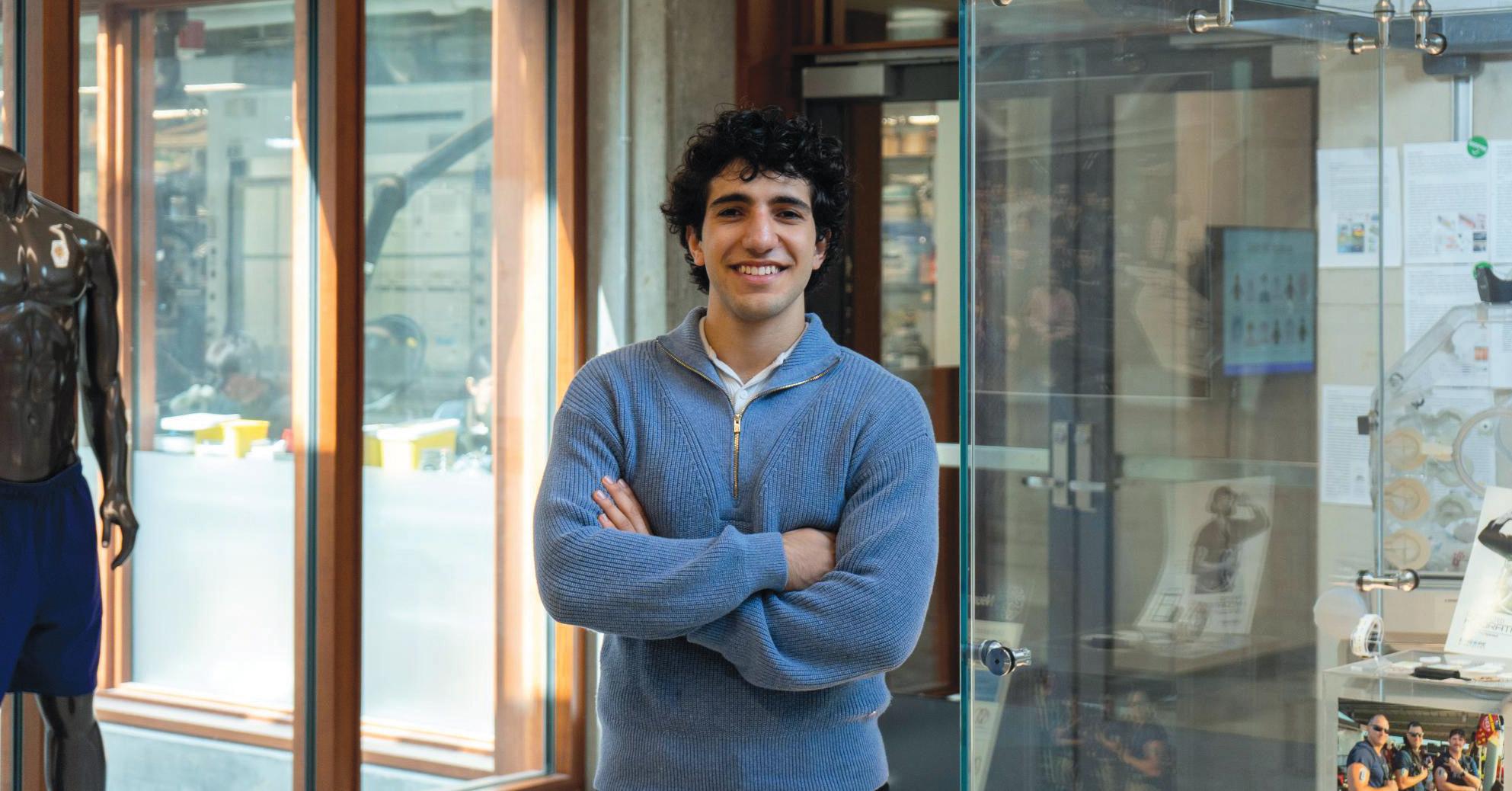
Scoping Review,” analyzed the effect of using lowintensity focused ultrasound to treat dementia through reviewing prior papers and data on the topic.
Weiss, who was involved in that poster, said the process “uses vibrational waves to modulate neural activity.” Khavari found that low-intensity focused ultrasound could be successful in slowing down or even reversing the progress of dementia.
While both posters have other authors, Khavari is listed as the first author and said he takes most of the academic credit.
He said he joined the Ahuja Spine Innovation Group because functional neurosurgery was a “happy marriage” between his engineering and biology interests.
“What my work (in the lab) entails is a lot of engineering,” said Khavari. “Essentially this can include anything from helping soldering the
devices, designing them and all the way to being present in some of the human trials.”
Dillan Prasad, a third-year Feinberg student and Khavari’s lab mentor, described Khavari as the “single best undergrad” he had ever seen after mentoring hundreds. He said Khavari operates as an upper level Ph.D. student or MD student despite being just 19.
Prasad and Weiss both said getting two pieces into the congress is a great accomplishment for someone of Khavari’s age.
In the future Khavari said he hopes to pursue an MD/Ph.D. in neuroscience or biomedical engineering.
“He’s (Khavari) the exact type of person that a school like Northwestern hopes to produce,” Prasad said. “Instead of just studying, he’s actually applying that by actively developing medical devices and working on medical applications of
those devices, especially in neurosurgery. So I think this is just an early sign of the progress he’s going to make, and I’m really excited to watch him make it.”
williamfisher2028@u.northwestern.edu
Setting the record straight
An article published in Wednesday’s paper titled “City proposes 2026 budget” inaccurately stated that the city’s budget has always operated in a deficit and avoided levies and the amount by which contributions to public safety pensions will increase in FY 2026. The Daily regrets these errors.
The Daily Northwestern
Fall 2025 | An independent voice since 1923 | Evanston, Illinois
DESIGN EDITORS
EDITOR IN CHIEF
Emily Lichty
PRINT MANAGING EDITORS
Alexander Hernandez Gonzalez, Sasha Draeger-Mazer, Audrey Pachuta, Hannah Webster
MULTIMEDIA MANAGING EDITORS
Sydney Gaw, Christina Lin, Sarah Serota
CAMPUS EDITOR
Nineth Kanieski Koso
ASSISTANT CAMPUS EDITORS
Cate Bouvet, Cayla Labgold-Carroll, Ashley Wei
CITY EDITOR
Anavi Prakash
ASSISTANT CITY EDITORS
Ashley Dong, Regan Huizenga, Siddarth Sivaraman
SPORTS EDITOR
Eli Kronenberg
ASSISTANT SPORTS EDITORS
Maya Heyman, Andrew Little
OPINION EDITOR
Aidan Klineman
ASSISTANT OPINION EDITOR
Alexia Sextou
ARTS & ENTERTAINMENT EDITOR
Maya Wong
ASSISTANT ARTS & ENTERTAINMENT EDITORS
Clare Kirwan, Clara Martinez
FEATURES EDITOR
Carlotta Angiolillo
ASSISTANT FEATURES EDITOR
Yana Johnson
GAMEDAY EDITOR
Anna Watson
IN FOCUS EDITORS
Shae Lake, Leah Schroeder
SOLUTIONS EDITOR
Janelle Mella
ASSISTANT SOLUTIONS EDITORS
Meryl Li, Navya Singh
SOLUTIONS GRANT COORDINATOR
Lily Ogburn
AUDIO EDITOR
Finn Hazen
ILLUSTRATIONS EDITOR
Siri Reddy
ASSISTANT ILLUSTRATIONS EDITOR
Lily Ogburn
PHOTO EDITOR
Jonah McClure
ASSISTANT PHOTO EDITOR
Dov Weinstein Elul
VIDEO EDITOR
Avantika Singh
DATA VISUALIZATION EDITOR
Femi Horrall
ASSISTANT DATA VISUALIZATION EDITOR
Diya Raj
POLLING EDITOR
Grace Wu
ASSISTANT POLLING EDITORS
Samanta Habashy, Eunice Eunsoo Lee
CROSSWORD & GAMES EDITOR
Miguel Tsang
ASSISTANT CROSSWORD & GAMES EDITOR
Kate Pollot
COPY CHIEFS
Ruby Grisin, Kamran Nia
COPY EDITORS
Bianca Dishmon, DJ Harrison, Joshua Singer
Shun Graves, Matt Wasilewski
ASSISTANT DESIGN EDITORS
Lauren Kee, Diya Raj
AUDIENCE ENGAGEMENT EDITOR
Rachel Schlueter
NEWSLETTER EDITORS
Marissa Fernandez, Ben Shapiro
ASSISTANT NEWSLETTER EDITOR
Natalie Gordon
SOCIAL MEDIA EDITOR
Dalton Hanna
ASSISTANT SOCIAL MEDIA EDITOR
Teresa Ayala Leon
WEB DEVELOPER
Yong-Yu Huang
DIVERSITY & INCLUSION CHAIR
Marisa Guerra Echeverria
DEVELOPMENT AND RECRUITMENT EDITORS
Jack Baker, Edward Simon Cruz, Melody Xu
STAFF EDITOR
Sejal Mehta
GENERAL MANAGER
Stacia Campbell
SHOP MANAGER
Chris Widman
BUSINESS OFFICE STAFF
Branden Chen, Kevin Tang
ADVERTISING PRODUCTION STAFF
Christina Feng
Ducks Dan and Dave: Fall Wonder and Woe
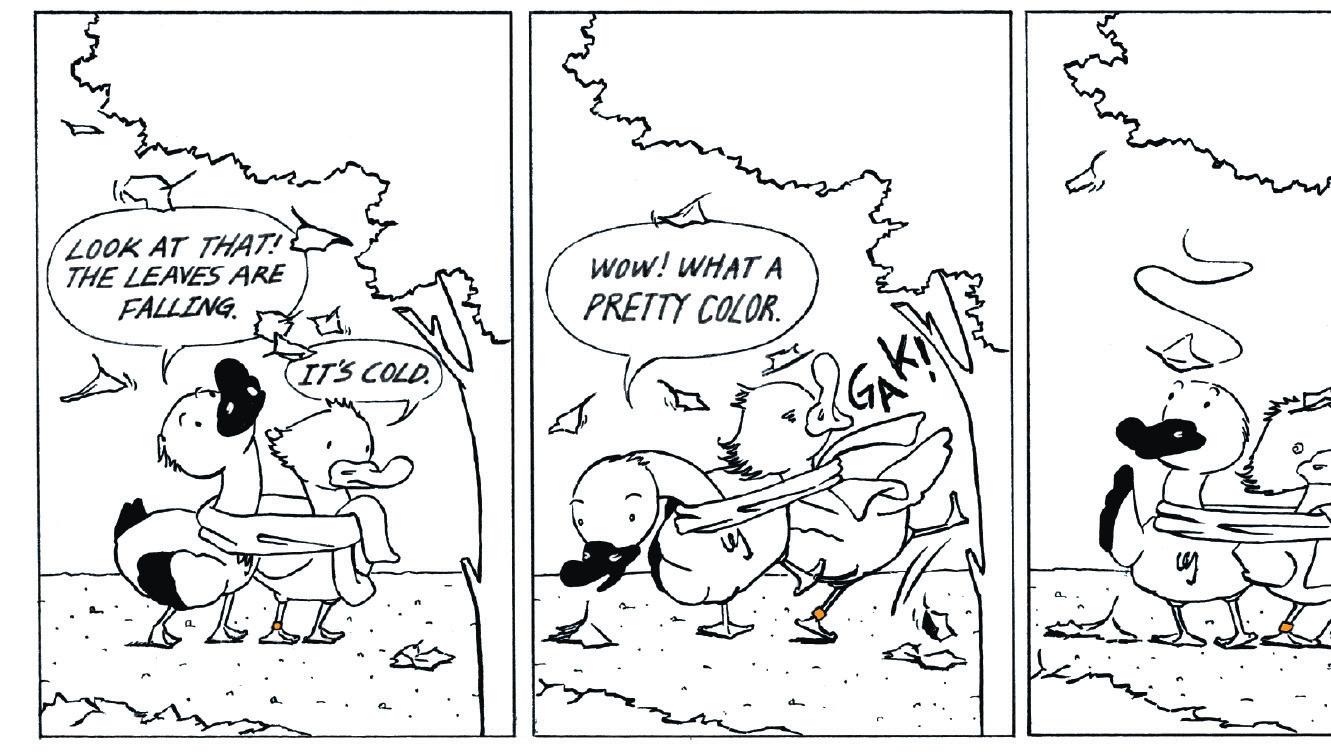

Nathaniel Foster is a student at the School of Professional Studies and writer of Ducks Dan and Dave. He can be contacted at nathanielfoster2027@u.northwestern.edu or @duckscomics. Lia Kim is the illustrator for Ducks Dan and Dave and is not associated with Northwestern. e views expressed in this piece do not necessarily re ect the views of all sta members of e Daily Northwestern.
Sergio Hernandez resigns leadership
Evanston/Skokie School District 65 Board
President Sergio Hernandez stepped down from his leadership position at a special board meeting to discuss school closure scenarios Tuesday morning.
Sandwiched between the federal indictment of former Superintendent Devon Horton on 17 counts of wire fraud, embezzlement and tax evasion and the district’s deliberations over school closure scenarios, Hernandez’s resignation came with mounting community pressure.
Board member Patricia S. Anderson was named the board’s new president in a unanimous
vote that was met with applause from attendees.
Hernandez said it was an honor and privilege to serve as District 65’s first Latino board president. He indicated that he would remain on the board, saying that it will continue to work to build trust in the community.
“It’s been an honor to really try to incorporate an equity lens in the work that we continue to do and to seek justice for all students, in particular, most marginalized populations,” Hernandez said.
Hernandez was appointed to the board in January 2017 to replace departing member Richard Rykhus, making him the longest-tenured board member by five years. After keeping his seat in an uncontested 2019 race, he became District 65 board president in April 2022 and has been elected to the leadership role every year since. The second-longest-tenured board member,
on District 65 board Nathaniel Foster is a student at the School of Professional Studies and writer of Ducks Dan and Dave. He can be contacted
Mya Wilkins, was appointed in October 2022. Anderson was one of four new board members elected in April. She led a field of 12 candidates, earning about 16% of the vote. A former District 65 staff member for over 30 years, she campaigned on a platform of improving the district’s financial outlook and continuing the district’s work in equity.
The change in board president comes days after the U.S. Attorney’s Office for the Northern District of Illinois accused Horton and three other men of an alleged operation that defrauded almost $300,000 from the district. The indictment also alleged that Horton misused the district’s credit card and failed to report either offense on his taxes.
Horton served as District 65’s superintendent from June 18, 2020 to June 30, 2023. The board and administrators participated in
The Daily Northwestern
Mind the Gap
By Tanat John Tungsubutra
interviews and provided records for a two-year federal investigation that started weeks after his departure, Hernandez and Board Vice President Nichole Pinkard wrote Friday in a message to families.
A petition calling for Hernandez’s resignation garnered 329 signatures at the time of publication. At the meeting, Anderson quoted the late writer James Baldwin, saying that not everything that is faced can be changed, but nothing can be changed until it is faced.
She said she would work collectively with the board, the district’s bargaining unit and other sectors of the Evanston community to meet the many challenges that the district faces.
“Let’s turn the light back on in the lighthouse,” Anderson said.
— Siddarth Sivaraman
or @duckscomics. Lia Kim is the illustrator for Ducks
destruction.
In front of a gaggle of news cameras and photographers, Mokyr spoke about his accomplishment to over 130 members of the Northwestern community Monday a ernoon in Cahn Auditorium. Around 500 unique viewers tuned into the livestream of the news conference.
At NU’s celebratory news conference for his achievement, he re ected on his ve-decade tenure at NU, discussed the importance of interdisciplinary study and looked ahead to some of humanity’s most pressing challenges.
Mokyr, still digesting the news, said he was “a li le bit dazed.”
He joined NU in 1974 and said he is proud to be a member of the NU economics and history departments because of their commitment to scholarship and intellectual activity.
Mokyr specializes in the economic history of
rapid responder, you can rapidly respond with your pocketbook.”
Mendoza and Biss also advised community members to memorize or write down the Illinois Coalition for Immigrant and Refugee Rights hotline number — (855) 435-7693 — and not hesitate to call it.
Several community members called for Hernandez and board member Mya Wilkins to fully resign their positions for serving during Horton’s alleged actions. Wilkins was not present at the meeting.
Evanston resident Samantha Schwimmer said Hernandez “stood behind” Horton as experienced teachers were pushed out and transparency eroded.
“District 65 was once considered a crown jewel of our community,” Schwimmer said. “It is now a worthless, tarnished relic le in ruins by ego, denial and your failed leadership.”
In a message read to the board on her behalf, Lincolnwood Elementary School teacher Marla Dobrin wrote that she was disheartened by the board’s decision to schedule a special meeting for Tuesday morning at 9 a.m., ve minutes before most of the district’s schools started.
Salem said he had asked the board to schedule a special meeting before community feedback sessions on the administration’s proposed scenarios began Tuesday evening. e board previously scheduled the special meeting for Oct. 8 at 5 p.m. — during parent-teacher conferences — but the rescheduled meeting time was even more inconvenient for teachers, parents and sta , Dobrin wrote.
“District 65 teachers always put our students rst and at the forefront of what we do,” the message read. “Isn’t it about time the board and administration do the same for the teachers who are so dedicated to teaching them?”
District administration presents updates to recommended 3-school scenarios
Beardsley also shared updates to the three-school scenarios the administration presented to the board Sept. 29.
especially because violence o en brings up deep emotions.
“My purpose is to try to be as transparent as possible, about my own stakes, my own views, in order to encourage students to actually bring forward their own views and a achments because I think that is really the only way we can actually try to understand historical protagonists’ views and choices,” Pinhas said.
She said although it is a historical course, she explicitly addresses current events by hosting a 10 minute discussion at the beginning of class on contemporary sources, such as newspaper articles or social media posts that students bring in.
Political science Prof. Wendy Pearlman, who has taught Poli Sci 395: e Israeli-Palestinian Con ict and Political Science 351: Middle East Politics since 2009, said her classes focus more on history than most political science classes.
“I am deeply, deeply convinced that it’s really impossible to understand this con ict without deep a ention to history,” Pearlman said. “ e more that (students’) learning is grounded in an understanding of the historical evolution over time and the consequences of events and issues and how they’ve evolved, the more they understand.”
Pearlman said it is challenging to teach students with a wide range of relationships to the con ict, from those with family in the region to students who feel hesitant to discuss the con ict because they feel they don’t know enough to form an opinion.
roughout 16 iterations of the class with NU students, she said their commitment to the spirit of learning and respect for each other hasn’t changed.
Shyovitz said he expects his students to tolerate and express curiosity about opinions they disagree
Europe, particularly between 1750-1914. His work centers on understanding the growth of useful knowledge in European societies, the intellectual and economic starts of technological progress and the impacts of industrialization and economic progress on economic welfare.
In his speech, Mokyr cited economic historians Robert Fogel and Douglass North, who both won the Nobel Prize in Economic Sciences in 1993.
Mokyr said Fogel told him that economists “must deal with economic history.” He said economists can learn from economies that no longer exist, such as formal slave markets and feudalism, in the same way that evolutionary biologists use paleontology to learn about extinct species.
According to Mokyr, North o en spoke of technological progress and institutional change, suggesting that institutions are what hold societies back rather than new technologies.
Mokyr wrapped up his speech by presenting what he sees as two of humanity’s biggest challenges: climate change and demographic change.
A er the meeting, Jacqueline Mendoza, a member of the Evanston ICIRR branch Sanctuary Evanston, said the organization’s rapid responders have been a acked, harassed and followed home. She said she’s thankful for community members who have put themselves at risk to protect others.
“You never know if you’re gonna come back home, and that’s the scary part,” she said.
Over the past few weeks, community members
All three scenarios that the board agreed to discuss further involve closing Lincolnwood and Kingsley Elementary Schools. Washington Elementary School and Dawes Elementary School are also named as potential shu erings.
A third scenario, proposed by Board Vice President Nichole Pinkard, would close Dewey Elementary School and convert the Dr. Martin Luther King Jr. Literary and Fine Arts School into a K-5 neighborhood school. Beardsley said the administration is still modeling the nal scenario and will present its ndings at an Oct. 27 meeting.
Based on board feedback, Beardsley said the district shi ed its recommended school boundaries to reduce projected utilization rates from over 100% at some schools to a maximum utilization of 88% overall across the district’s two modeled scenarios. Utilization rates measure enrollment as a percentage of a school’s capacity.
e suggested school boundary changes would move Orrington Elementary School’s boundary south and west while moving Dewey’s boundary further south. While the new boundaries would balance class sizes at each school more e ectively, it would also raise transportation costs as more students would live far from school or cross large roads, Beardsley said.
Anderson said her main goals for Phase 3 of SDRP are to keep a balanced budget, maintain healthy levels of cash on hand and balance utilization rates as the cash-strapped district navigates a troubled scal future.
Board member Maria Opdycke stressed her desire for clear goals beyond those objectives. e district must bus students living more than 1.5 miles from their school or those for whom walking to school would pose a serious safety risk, but she pointed out that the district hasn’t decided how many students it aims to have fall under that policy a er school closures.
Instead, Opdycke suggested reducing the district’s
with.
Directed by President Donald Trump’s Executive Order “Additional Measures to Combat Anti-Semitism,” the Department of Education launched an investigation alleging “widespread antisemitic harassment” in several universities, including NU.
Federal oversight of the University is “dramatically misplaced,” Shyovitz said. Since much of the federal scrutiny focuses on questions of antisemitism, he said it now feels more important than ever to teach his class and to “not take an executive order as the last word of what antisemitism is.”
“Once we start teaching with the voice in the back of our minds saying, ‘Well, but what’s the government going to say about that?’ then we have lost the game,” Shyovitz said.
He said his approach is not to consciously change anything about his curriculum based on federal concerns.
Instead, Shyovitz said it is critical to double down on the role of higher education by dedicating time to historical study of the topic, noting that he felt those approaches feel riskier than they used to be.
Pinhas echoed Shyovitz, saying that everyone in higher education is in a state of uncertainty, so she insists on teaching these subjects in an a empt to make the classroom a safe space for civil discourse.
On top of that, Pearlman said students need to engage with the news and be citizens of the world.
“How could I look at myself in the mirror and say, ‘I’m not going to teach this class because I’m too afraid to teach it’?” Pearlman said. “I don’t deserve to be a professor and be a scholar of Middle East politics if I can’t go into the classroom and provide this needed service to students because of the intimidation that exists out there.”
catebouvet2028@u.northwestern.edu
“History is not a very good guide here, but it’s something that we have to face … even if history itself doesn’t give us an answer,” Mokyr said. “I strongly urge the world to keep pu ing e orts and money and resources and incentives to the people who are trying to invent us out of these two crises.”
Mokyr’s remarks drew several sustained rounds of applause from the audience. His speech was preceded by brief comments from University spokesperson Jon Yates, interim President Henry Bienen and Weinberg Dean Adrian Randolph. Each congratulated Mokyr and made statements about his work.
“At Northwestern, we o en talk about interdisciplinary work as a cornerstone of our strength, and Professor Mokyr re ects that strength with research that brings together economics, history, science and technology,” Bienen said.
Champagne ute in hand, Randolph led a toast to cap o the event.
History professor and Department Chair Kevin Boyle, who a ended the press conference, said Mokyr’s win was “insanely exciting.”
and leaders have taken action against ICE through community workshops, protests and nonpro t work. At a mid-September protest, congressional candidates Biss, Kat Abughazaleh and Bushra Amiwala were tear-gassed at the ICE facility in Broadview, Illinois. Abughazaleh said she saw some protesters get detained.
Jacqueline Mendoza said she wishes for community members not directly impacted by ICE’s
goal of always having 90 days of cash on hand to open up “wiggle room” to achieve the board’s broader valuebased goals.
Opdycke added that she felt con dent the district could slow down the process to nd a “more holistic” solution.
“ is board doesn’t have to act hastily in the same way that past boards have potentially done just because we think we might be at some ctional end of the road,” Opdycke said.
Hernandez, the board’s longest-tenured member, said the district’s pressing need to close schools has been a “can that’s kicked down the road” since it rst projected a scal year 2025 de cit in 2017, the same year the district successfully passed a referendum. He defended past boards and said the district spent its funds to build sta capacity, improve school environments and enhance equity for the district’s most marginalized populations.
Closing schools is inevitable, he said, and the process
“ ere are very, very few history departments in the world that have Nobel Prize winners,” Boyle said. “We couldn’t be happier, and we couldn’t be prouder.”
Fourth-year managerial economics and strategy
Ph.D. candidate Michael Giordano said he was “so happy” when he saw e New York Times’ article on Mokyr’s win.
Giordano was Mokyr’s research assistant from 2020 to 2022 and now works with him as a graduate student. He said the professor frequently goes out of his way to support students.
Mokyr’s speech was “quintessential Joel,” Giordano said — funny, with “a lot of big words to describe very basic things.”
“You can’t nd a more generous or kind person who deserves this, somebody who has reached the pinnacle of his profession while not losing any moral ground,” Giordano said. “I think that’s rare, and exceptional.”
n.kanieskikoso@dailynorthwestern.com
c.angiolillo@dailynorthwestern.com
presence to do more to protect their neighbors. Evanston Latinos Executive Director Ricardo Villalobos told e Daily he wants residents to know that it’s not okay for people to have to hide and that those who feel safe should speak up.
“ ey want us to hide and run away and be silent,” Villalobos said. “We have to do the opposite.”
femihorrall2027@u.northwestern.edu
will become harder if the board delays its decision. Staggering out closures as Salem suggested would result in further budget cuts, he added.
“We have already cut down to the bone,” Hernandez said. “Now, we’re going to be sawing bone in regards to programs and things we value as a community — the enrichments we have.” Salem, who was elected to the board in 2023, said it was di cult to accept Hernandez’s point because he believed the district wouldn’t be in its current situation had past boards done more to address their nancial woes.
Now, the board has to answer for the decisions its predecessors made, he said.
“We’re making cuts now that suck,” Salem said. “Class sizes are going up because previous boards didn’t do anything. We don’t need to make all these decisions now. We have time.”
s.sivaraman@dailynorthwestern.com
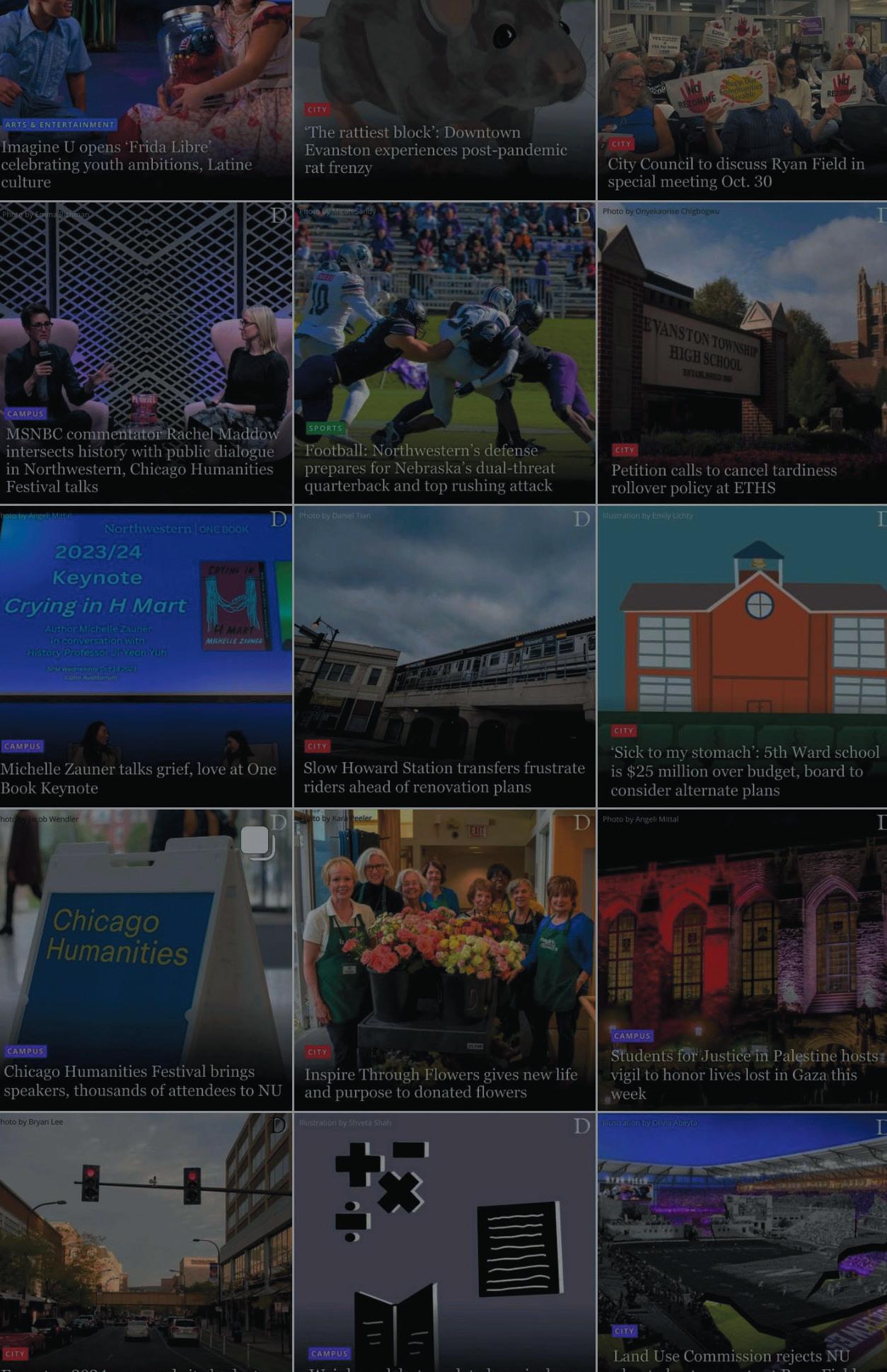



Wednesday, October 15, 2025
FIELD HOCKEY
Undefeated no more: No. 1 NU falls to Princeton
By AUDREY PACHUTA daily senior staffer @audreypachuta
Down goes No. 1.
For the first time since Northwestern’s current juniors marched through The Arch as freshmen, its field hockey team lost a game on home turf, closing the curtain on what had been an undefeated campaign through 11 games.
In a 3-2 Monday afternoon loss to No. 8 Princeton, the Wildcats (11-1, 3-0 Big Ten) fought until the final whistle, drawing three of their 10 total penalty corners after their goalkeeper had been pulled from between the pipes with three minutes to go.
Coach Tracey Fuchs commended her team for its valiant effort against a top-10 foe, but was quick to call the performance “a little bit inconsistent,” before jumping to name a late goal being waved off as a defining factor in the defeat.
“No sports team continues to win and win and win, so this is gonna be a good thing for us,” Fuchs said. “Sometimes as hard as losses are, they make you better.”
In two instances throughout the game — one down 1-0 early on in the second quarter and the other as the contest’s final minutes ticked down — the ’Cats stacked multiple corner opportunities in a row but weren’t able to capitalize.
Junior forward Ashley Sessa repeatedly pounded the ball out to her teammates
waiting at the edge of the box, trying different configurations to concoct the perfect scoring chance. Unfortunately for Sessa and company, eight of the nine penalty corners that began on her stick were shot in vain.
“In the end you have to execute corners and we did our best to get a few at the end,” Fuchs said. “We just couldn’t put them home.”
But before the ’Cats saw any meaningful offensive flashes, they were already playing from behind after their visiting foes struck first about five minutes into the game.
On that play, Princeton forward Saylor Milone took her time, dribbling the ball for more than 20 seconds until she drew a crucial whistle and subsequent corner opportunity. As Milone surveyed the field, her teammates initially set up in an unorthodox formation before transitioning to a more traditional approach. Visiting defender Ottilie Sykes’ drag flick whipped past redshirt freshman goalkeeper Juliana Boon to establish an early advantage.
After a quiet opening period for NU, it manufactured its fair share of secondquarter scoring chances, rattling off six shots — one of which found the back of the net after senior back Maja Zivojnovic teed up junior forward Piper Borz.
The two teams went to halftime with the score knotted at 1-1.
Out of the break, Princeton kept its foot on the gas, dominating time of possession but initially struggling to create the
same caliber of offensive pressure it had in the opening quarter. After six and a half minutes of second-half play, the Tigers found their lane, capping a prolific passing onslaught with a no-look, backhand assist to midfielder Molly Nye, who delivered the final blow.
Though both teams tacked on goals in the final quarter, from that point on, Princeton never lost its lead.
After the Tigers scored, establishing a two-score advantage with 11:27 left to play, the ’Cats found themselves in the hot seat as hopes of keeping their undefeated streak alive started to look grim.
Fuchs said postgame that she was proud of the way her group had responded late in the game as it sought to defend its home field, despite the eventual loss.
With just over four and a half minutes remaining, graduate student forward Grace Schulze barreled down the field and fed the ball to Sessa on the run. Sessa corralled the pass, tapped the ball once to establish control, then lifted it over the Princeton goalkeeper’s head. Schulze, who transferred from the opposing team ahead of the season, refused to go down without a fight against her former teammates.
Down 3-2 with 30 seconds left to play, Sessa drew a penalty corner, then another and then a third. On the first attempt, Zivojnovic’s initial shot was blocked and it kicked out to junior forward Olivia Bent-Cole. Sessa lifted Bent-Cole’s pass into the net, but another corner was called, ruling out

prepare for a corner attempt in the final minutes of No.
No. 8 Princeton on Monday. The Wildcats drew three of their 10 corners in
final three minutes, but they couldn’t find the equalizer.
what would have been a tying goal.
NU couldn’t score as the final seconds ran down and the Tigers handed the defending national champions their first loss since last season’s Big Ten Tournament.
After the defeat, Fuchs downplayed the result, instead turning her attention towards
her team’s upcoming tilts with Rutgers and Maryland.
“Doesn’t change a thing,” Fuchs said. “Just makes me a little sad going home tonight.”
audreypachuta2027@u.northwestern.edu
MEN’S BASKETBALL

New Ryan Field gets final beam FOOTBALL
By MAYA HEYMAN daily senior staffer @mayaheyman
City leaders and Northwestern Athletics executives celebrated the new Ryan Field as workers officially installed the stadium’s final beam Thursday morning, marking the conclusion of the project’s structural phase.
Mayor Daniel Biss, Athletic Director Mark Jackson and two members of the Ryan family addressed the crowd of more than 400 construction workers after Executive Director of Neighborhood and Community Relations Dave Davis kicked off proceedings.
“There’s never been anything like this in the history of college athletics, and it separates itself on so many different fronts,” Jackson said.
Jackson said Ryan Field not only looks forward to hosting football games, but also hopes to attract NCAA Championships, Big Ten Championships concerts and other events.
“It’ll be the most intimate stadium in America,” Pat Ryan Jr. said. “That’s because of the incredible engineering that went into it, but also the incredible craftsmanship.”
Both Pat Ryan Jr. and Jackson emphasized their hopes that the new stadium will improve the gameday experience for student fans and student athletes alike, highlighting plans for a student-dedicated plaza and collaboration with student groups.
After the speeches, Patrick Ryan (Kellogg ’59) announced the raising of the beam, which was signed by all of the construction workers, architects, engineers and others who have been
involved in the project. Construction workers then installed the beam using a 150-foot crane.
“This building is a strong representation of the vision of Northwestern University in partnering with Evanston,” Patrick Ryan said.
The Ryans, the main backers of the $850 million project, stressed their appreciation for the iron workers. Patrick Ryan also had praise for Biss, who served as the tiebreaking vote that made the rebuild possible.
“He did it because it was the right thing to do for his community, the right thing for Evanston, but this is going to be a monument for Evanston that attracts people from all over the country and other parts of the world as well,” Patrick Ryan said.
mayaheyman2028@u.northwestern.edu
’Cats land historic four-star recruit
By CHARLIE PERLMAN the daily northwestern @charlie_perlman
Four-star recruit Jayden Hodge will commit to Northwestern, Hodge announced Monday afternoon on Instagram. The Belgium native will enter campus next fall as the highest-ranked NU men’s basketball recruit in the modern era, according to 247 Sports’ composite ranking.
“It was definitely a hard decision,” Hodge told The Daily. “But I felt confident and thought about it for a while, and I’m happy that I’ve made this decision.”
Hodge attracted significant buzz among recruiters because of his unique two-way playmaking abilities. In 2024, he led Belgium to a seventh-place finish in the FIBA U18 EuroBasket championship, averaging 15.9 points, 6.9 rebounds and 3.7 assists per game. Beyond his offensive firepower, Hodge was a defensive pest, averaging 1.7 steals per game and just under one block per game.
Following a recruiting cycle with three of NU’s highest recruits in program history — Tre Singleton, Jake West and Tyler Kropp — coach Chris Collins is showing no signs of slowing down.
When Hodge visited campus in June, he received a tour from longtime friend and South Florida transfer Jayden Reid, a former roommate and teammate of Hodge’s older brother, Matthew. Hodge said he was struck by the beautiful campus and the academic rigor. More than anything, he said he felt truly wanted by Collins and the entire program.
“Northwestern has great coaching staff, and they made me a priority as a high schooler this year,” Hodge said. “Coach Collins really came in and started coming to my games, so the connection just got better and better every single day. I felt like I could go (to NU) and work hard and try to bring an impact immediately.”
With offers from schools including Georgetown, Mississippi State and Vanderbilt, Hodge said he faced a
difficult decision. He said he had the most trouble choosing between NU and Old Dominion. Hodge’s father, Odell Hodge, was a two-time CAA Player of the Year at the latter, and he currently serves as a special assistant to the head coach at his alma mater.
But college basketball wasn’t even on the cards for Jayden Hodge a couple of years ago, when he and his family were still living in Antwerp, Belgium. When he was a freshman, the family moved to Belmar, New Jersey to play for Brian Lynch, Odell Hodge’s former professional teammate and his sons’ godfather, at St. Rose High School. The brothers dominated, helping St. Rose achieve a No. 1 overall ranking in New Jersey.
With Matthew Hodge leaving to play for Villanova in the 2024-25 season, Jayden Hodge had to take a commanding role as a junior. And that he did, leading St. Rose to its second Shore Conference Tournament Championship, scoring 19 points and 10 rebounds in the finals before winning Shore Sports Insider’s Player of the Year award.
Ahead of his senior season, Jayden Hodge transferred to perennial high school powerhouse Montverde Academy, led by head coach Steve Turner, hoping to ride his success all the way to the Chipotle Nationals in April. Hodge decided to commit early in the year to give his full attention to Montverde.
“I’m here to get better and prepare for the college level, playing under coach Turner, who is a great coach,” Hodge said. “I believe we are going to have a great team this year, and we’ve been putting in a lot of work.”
Hodge had a simple message for NU fans eager to see his game at Welsh-Ryan Arena: He’s all about the end result.
“You can expect a player who plays to win,” Hodge said. “Every time I step on the court, I make winning plays. I’ll dive on the floor, play both sides of the ball and guard every position on the court. I’ll just do anything on the court that helps the team win.”
charlesperlman2029@u.northwestern.edu
